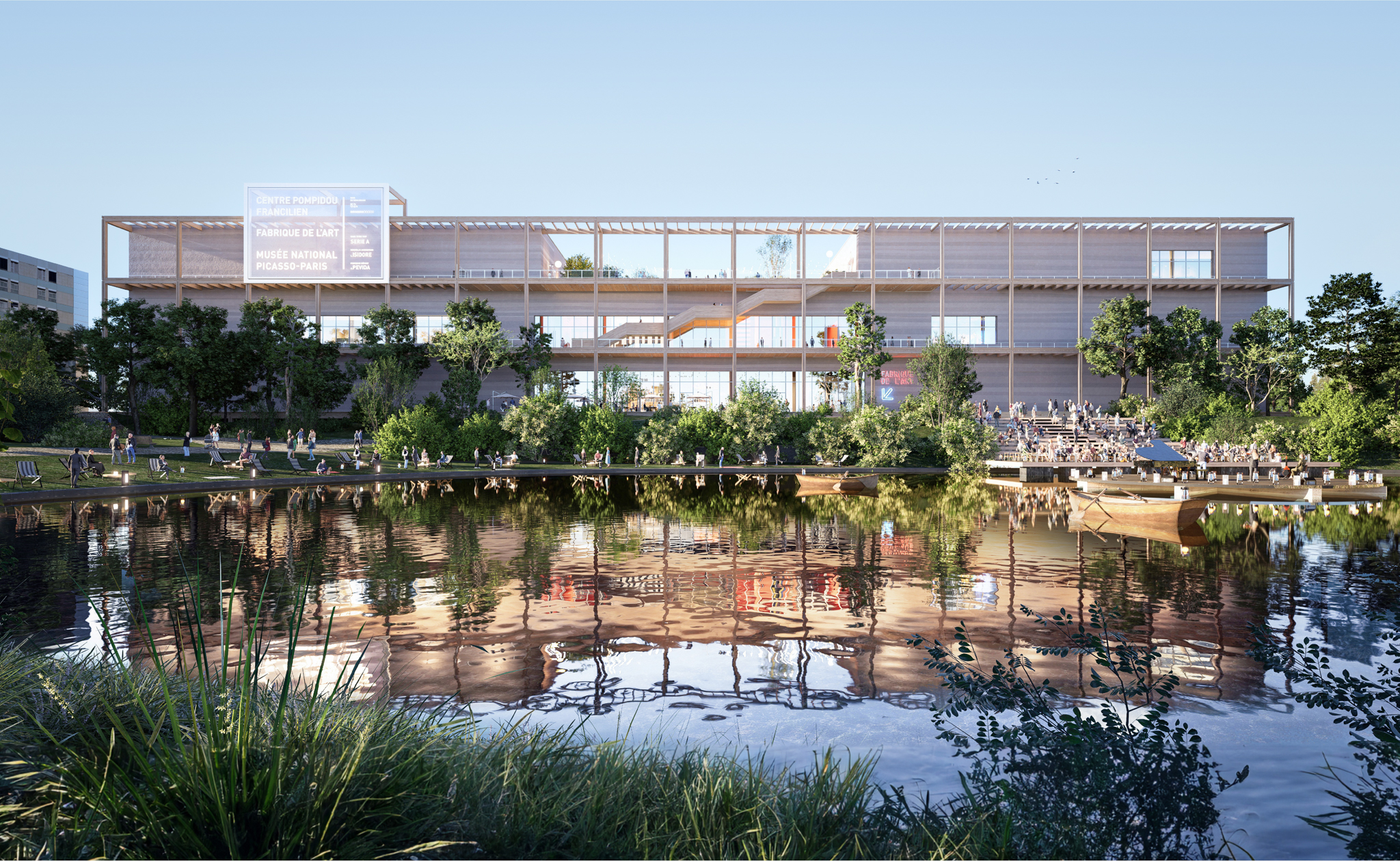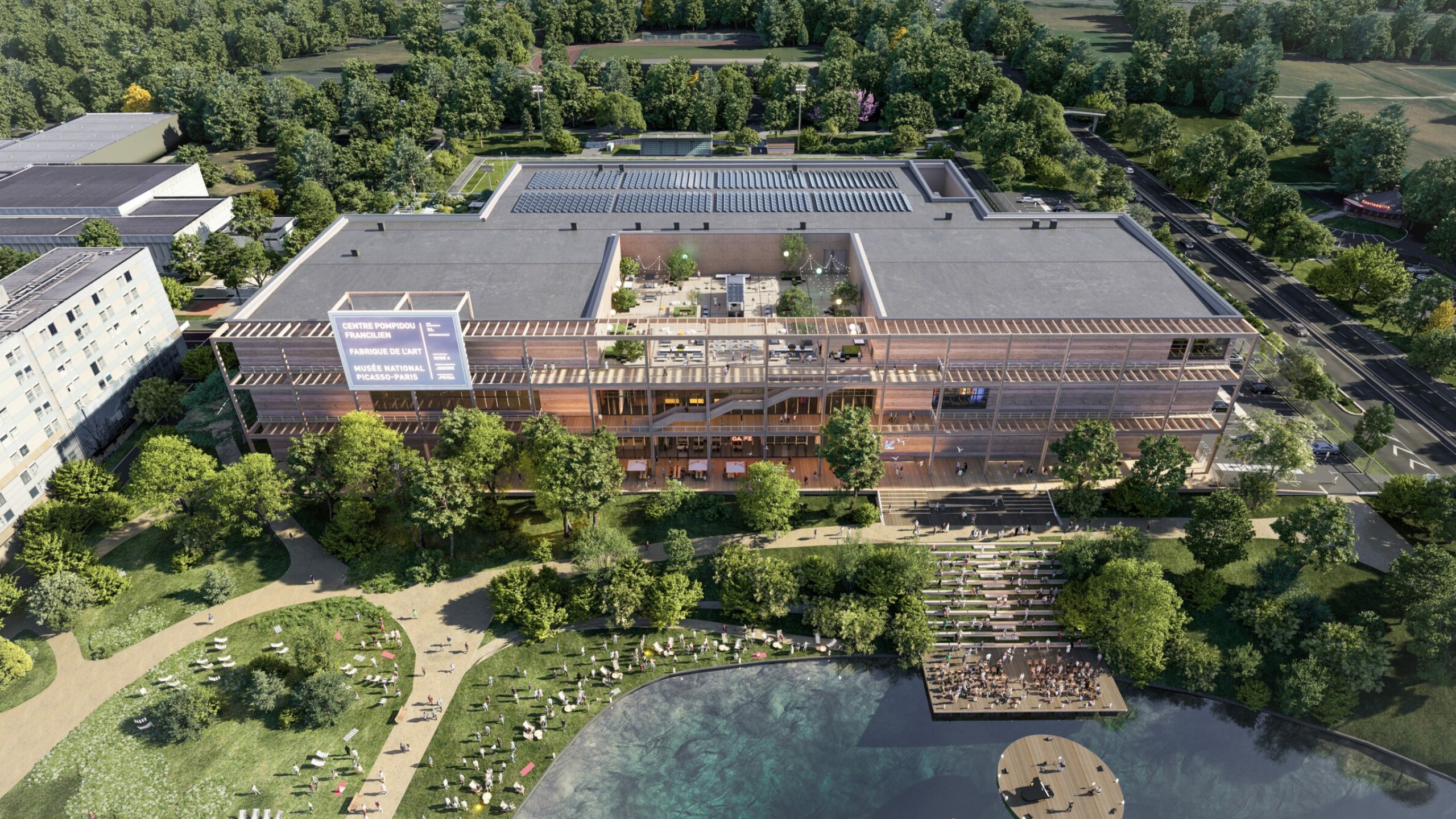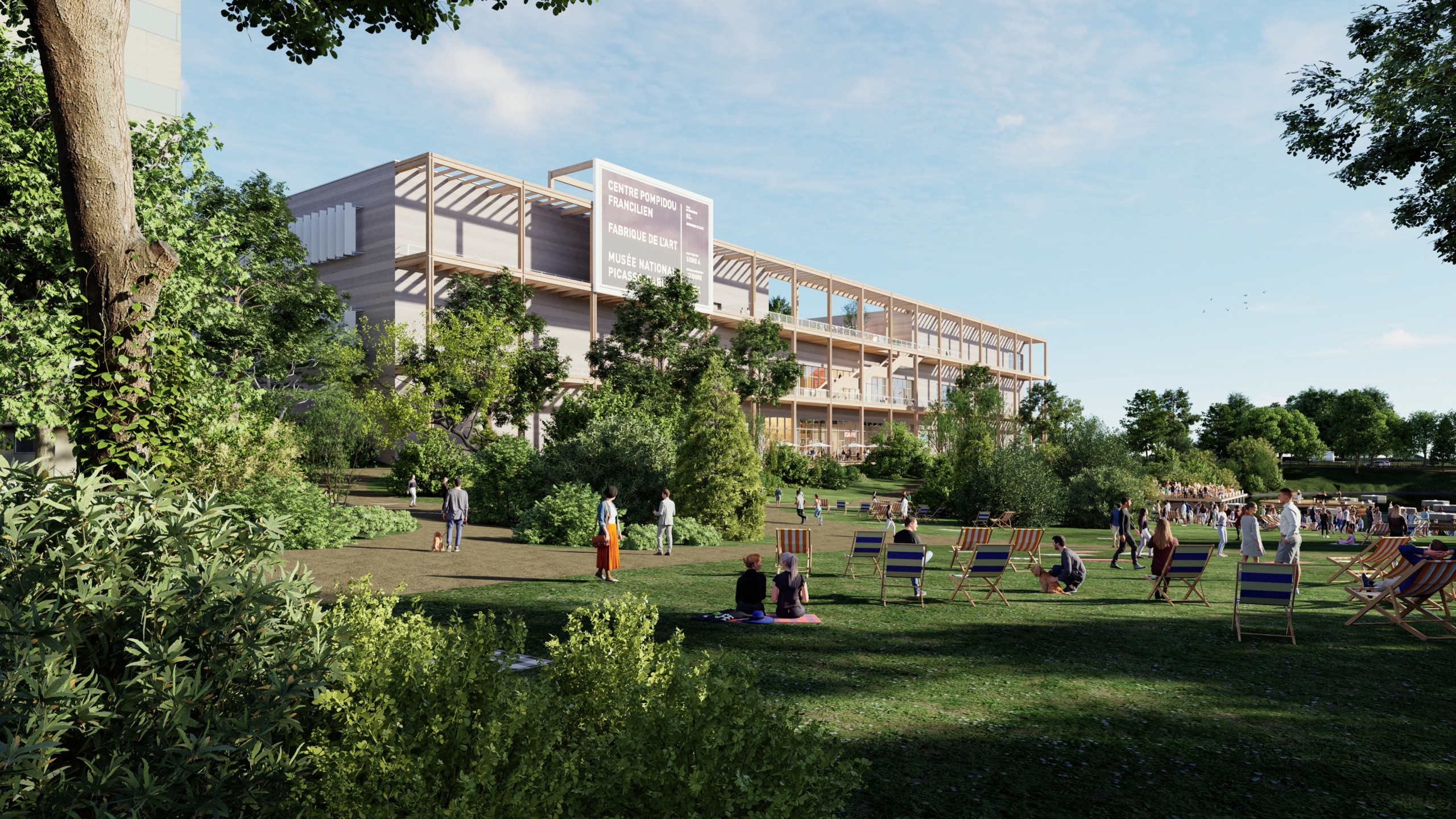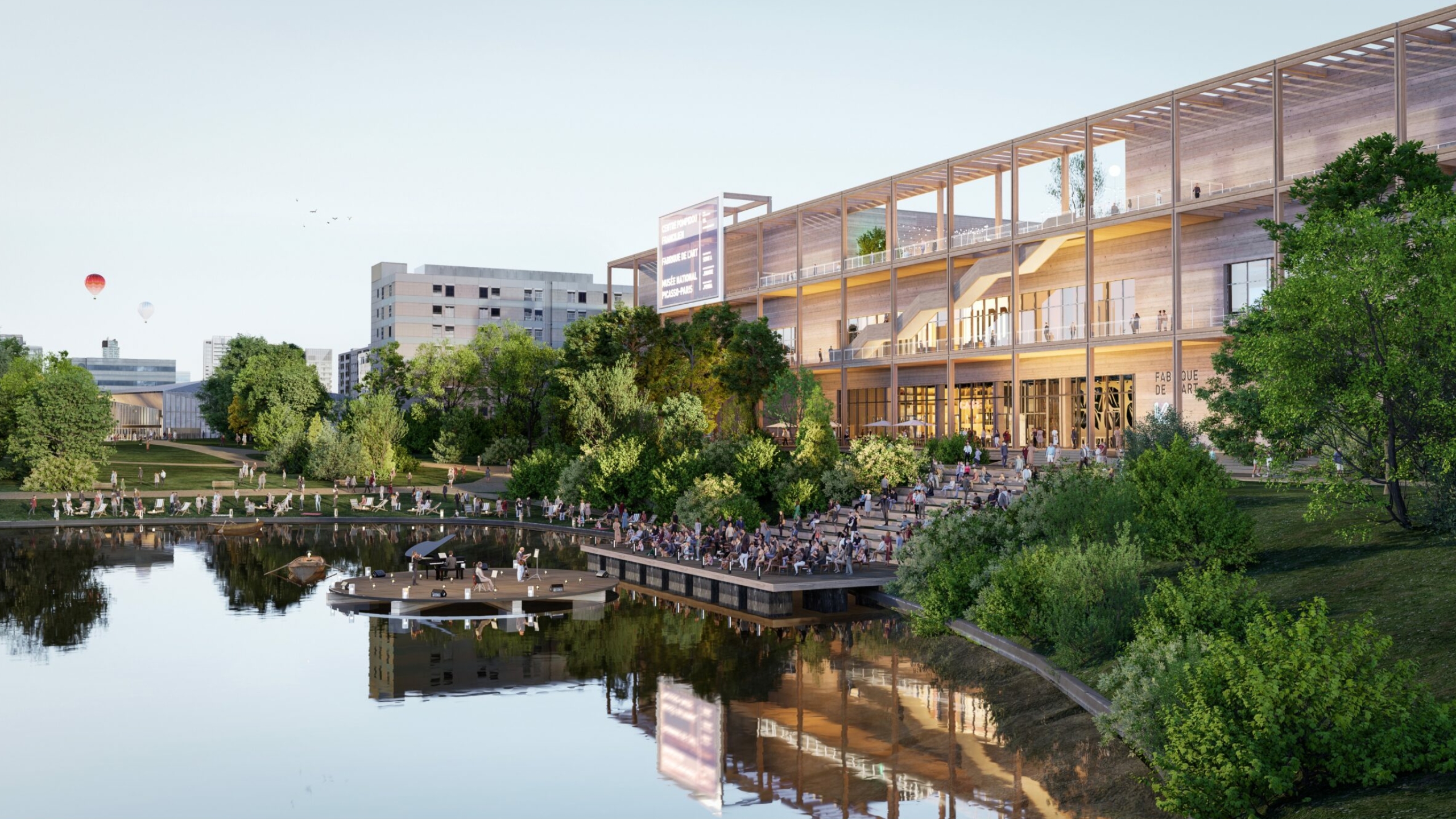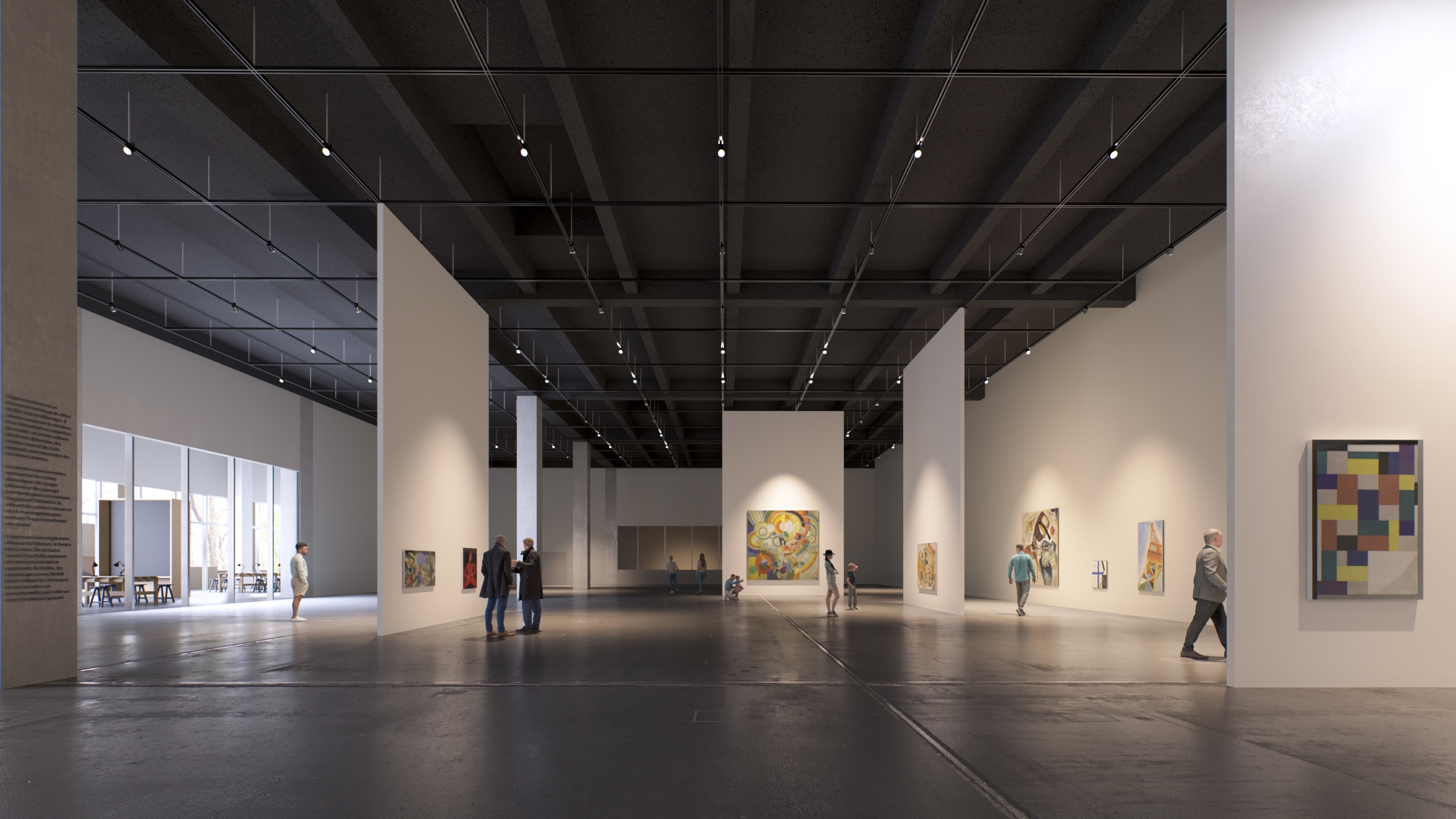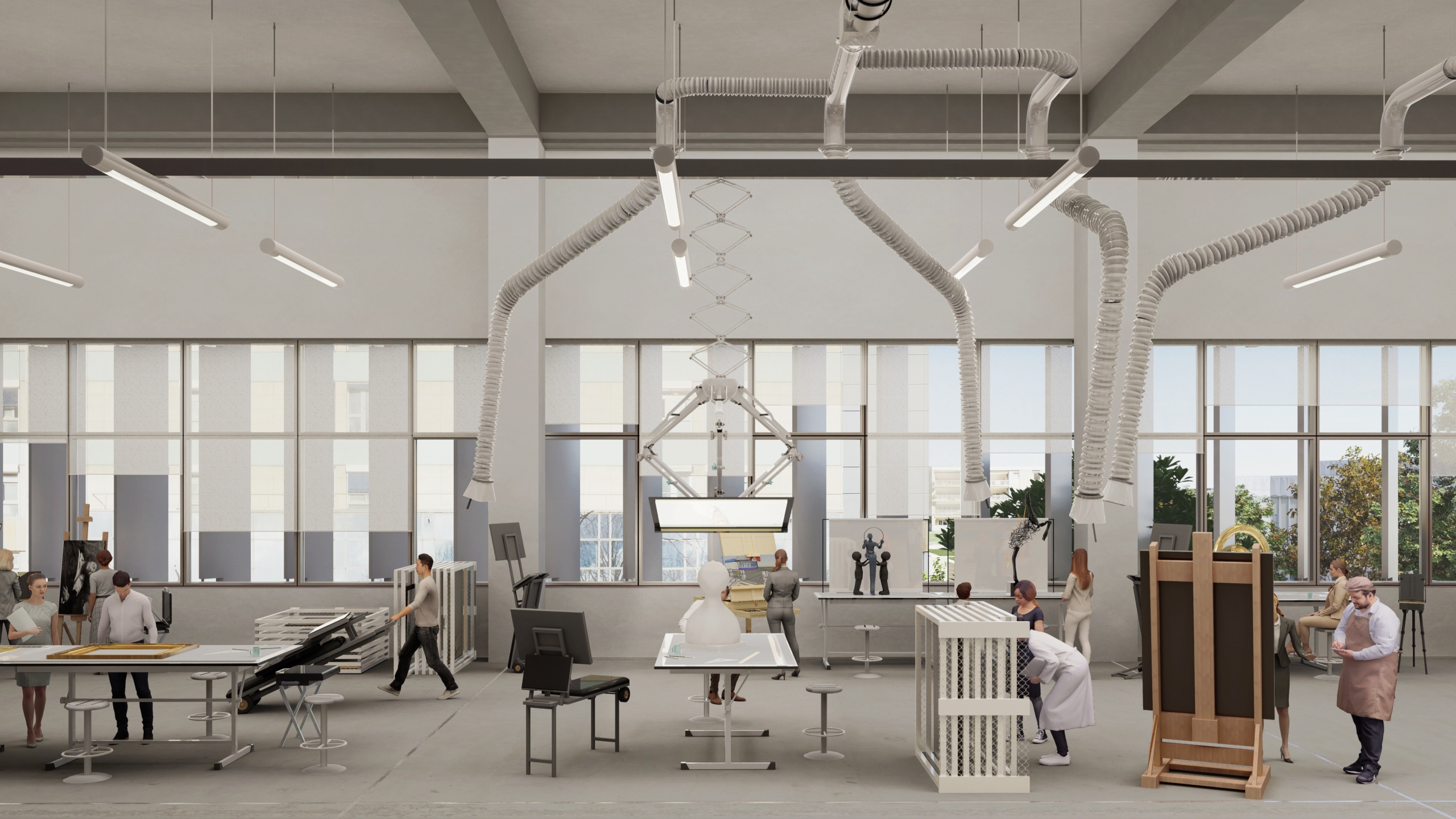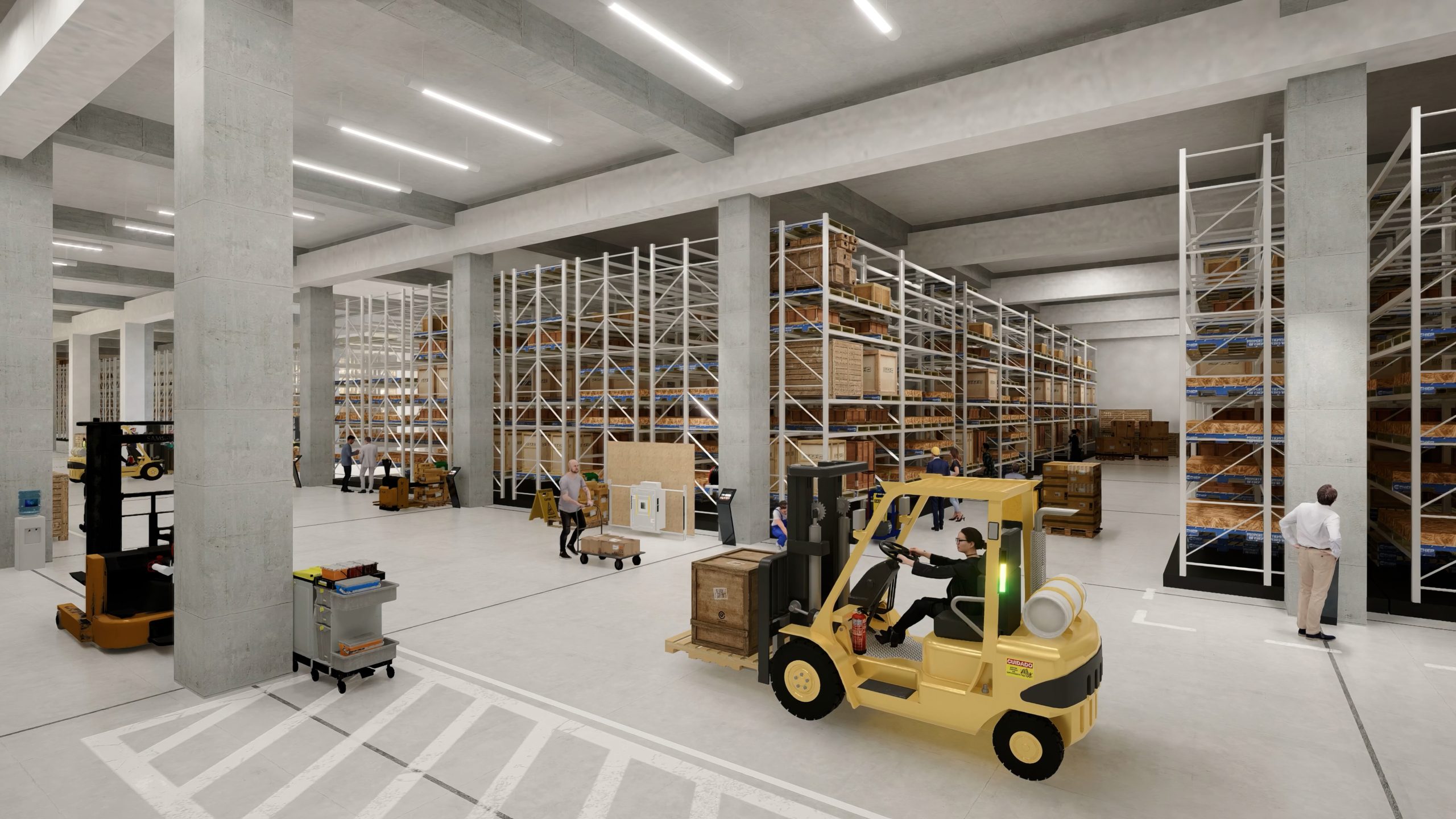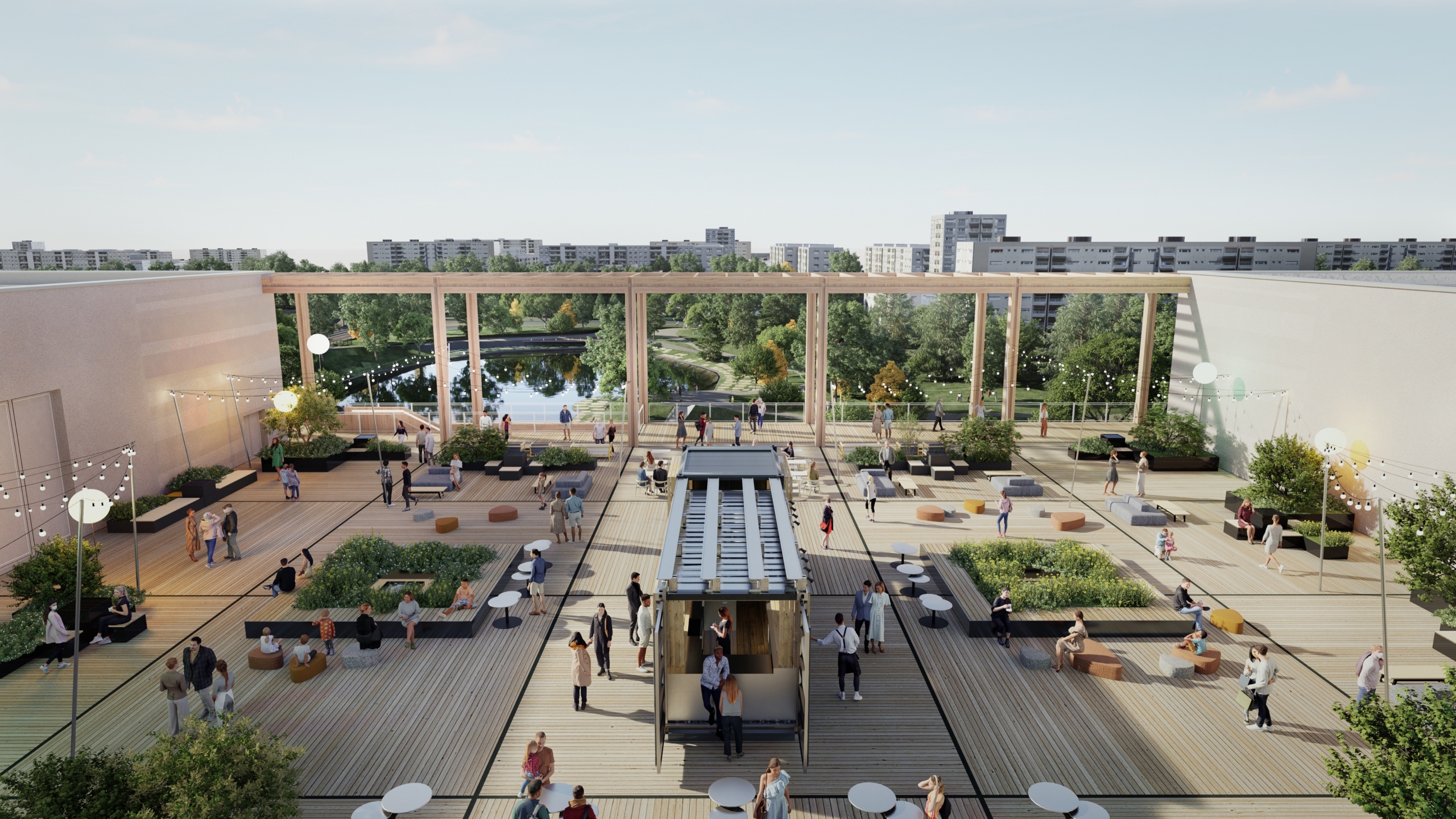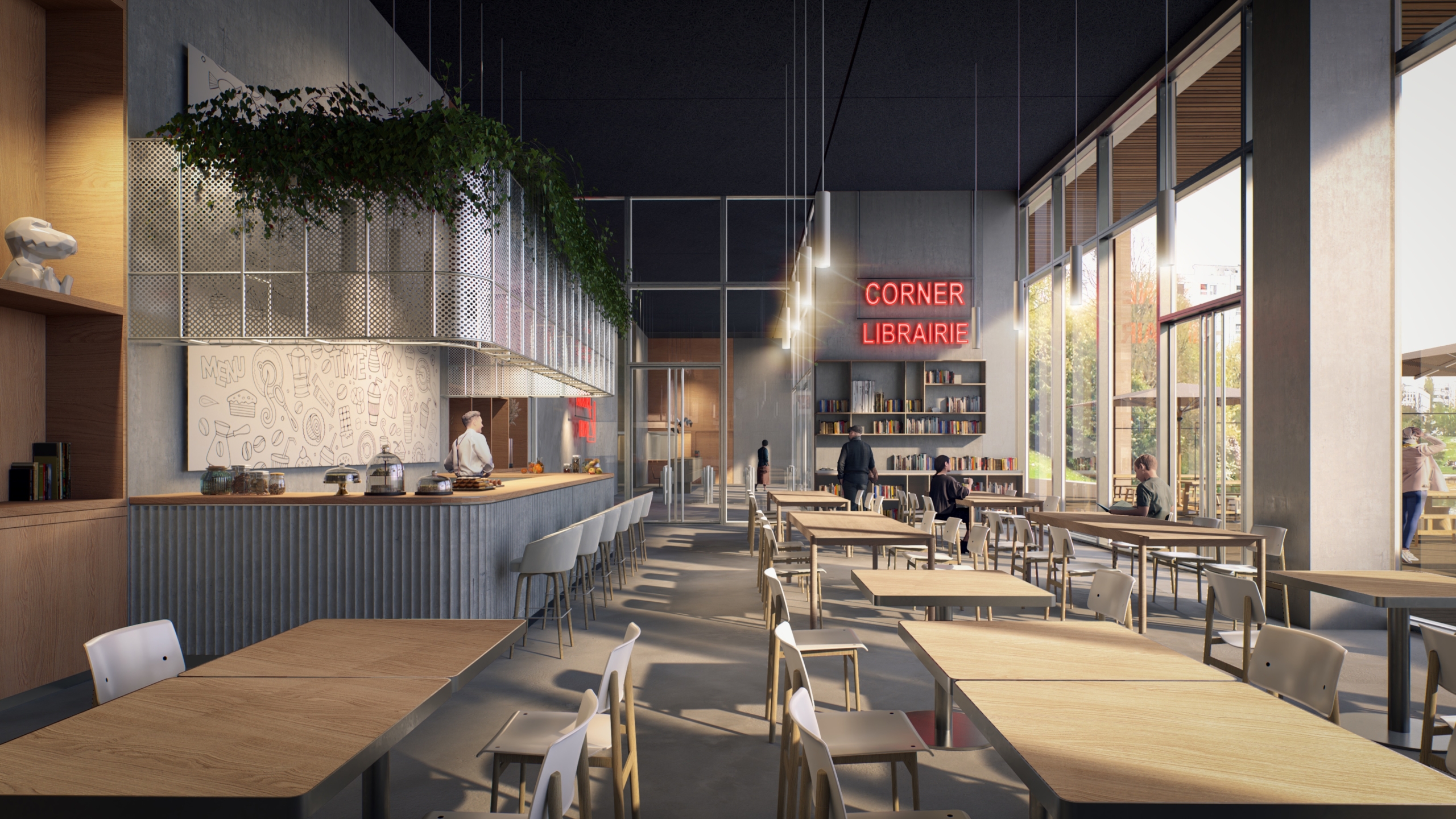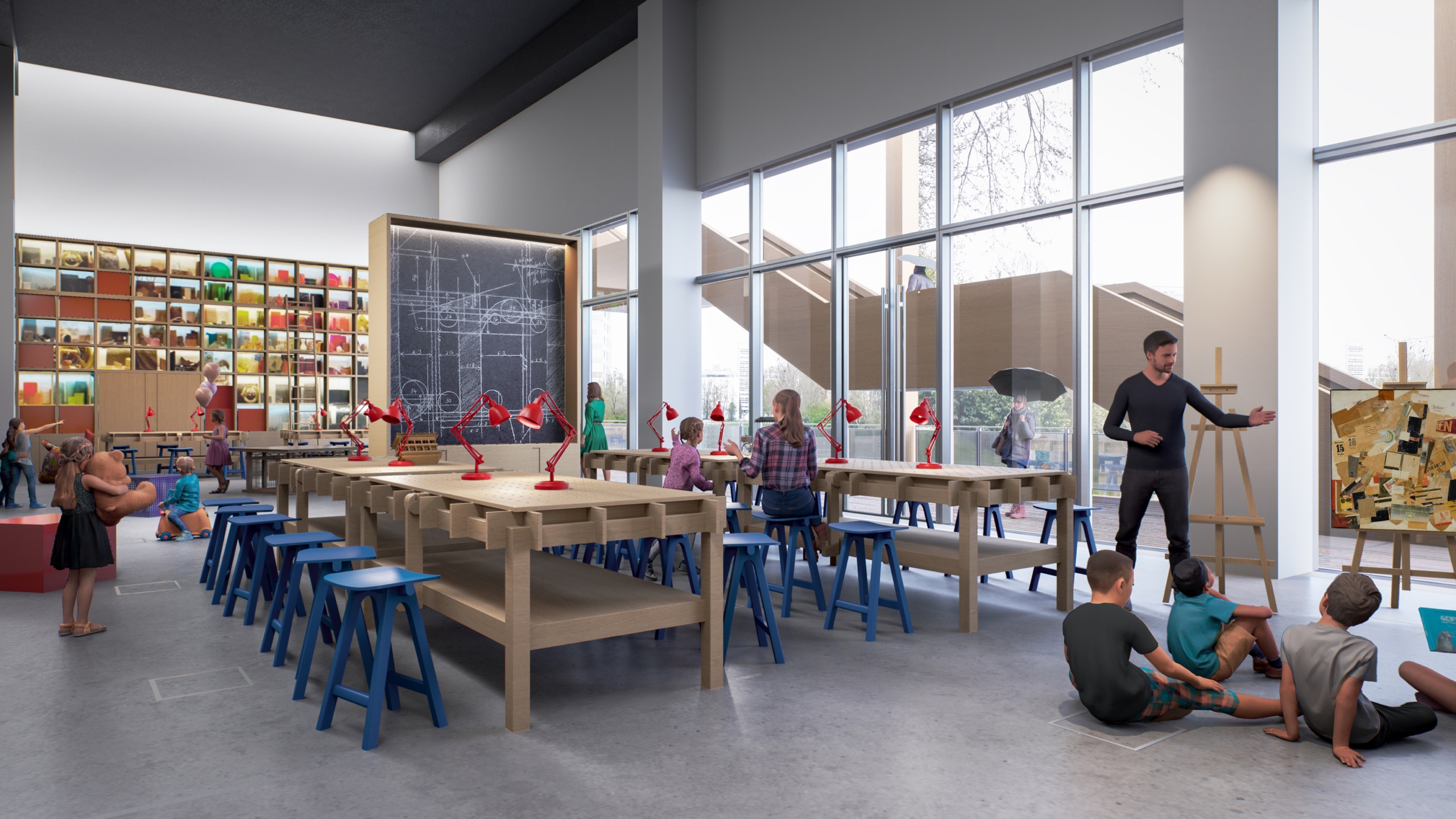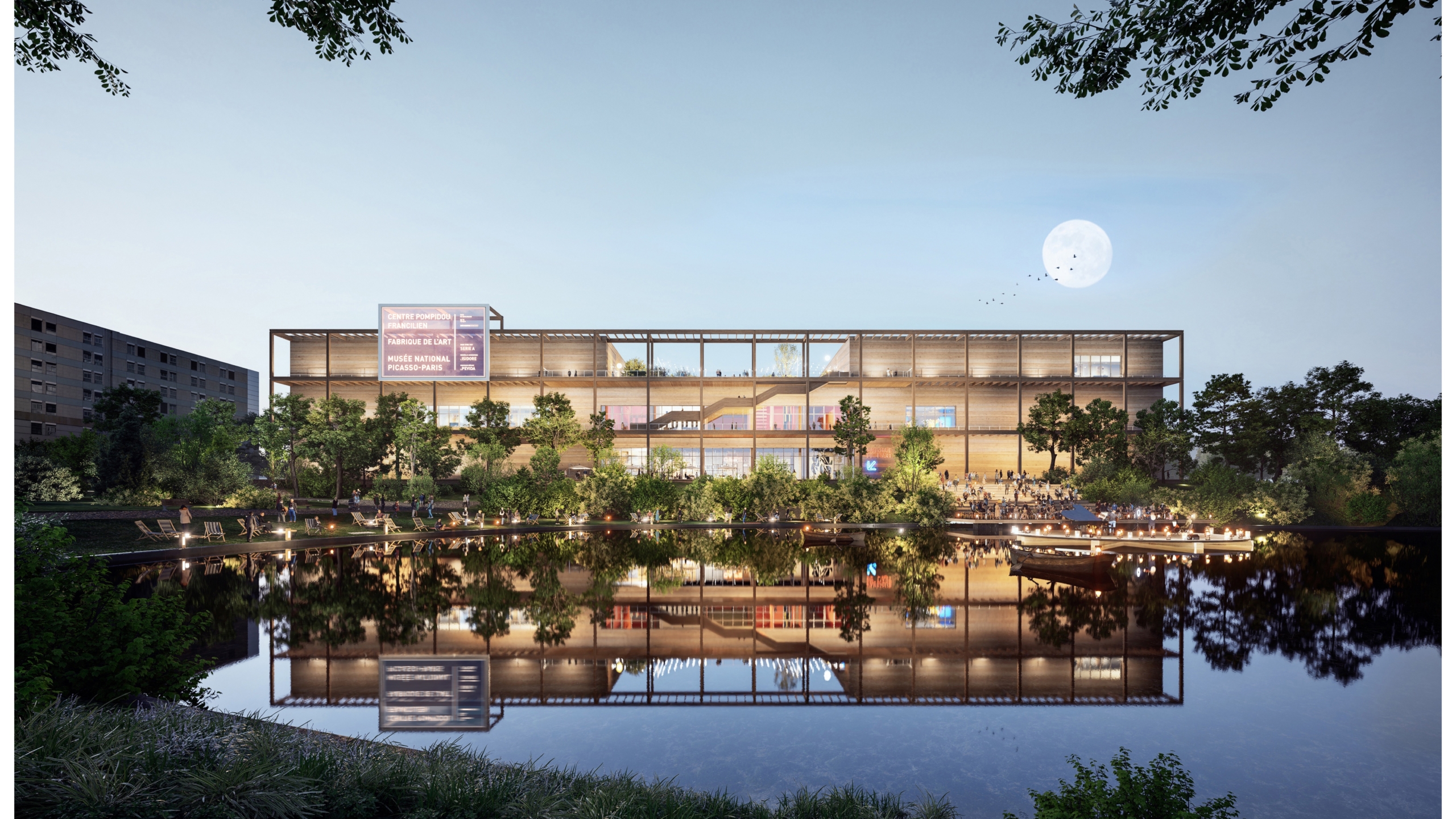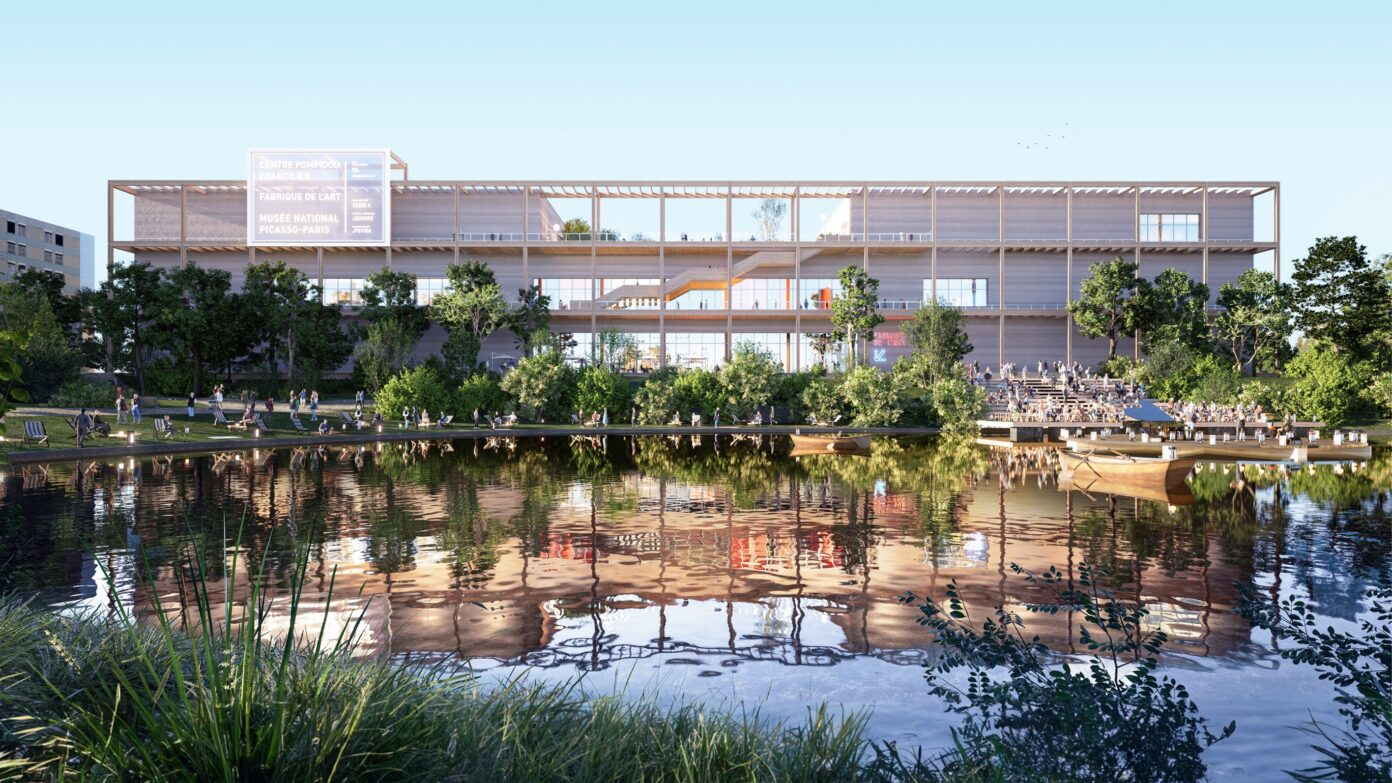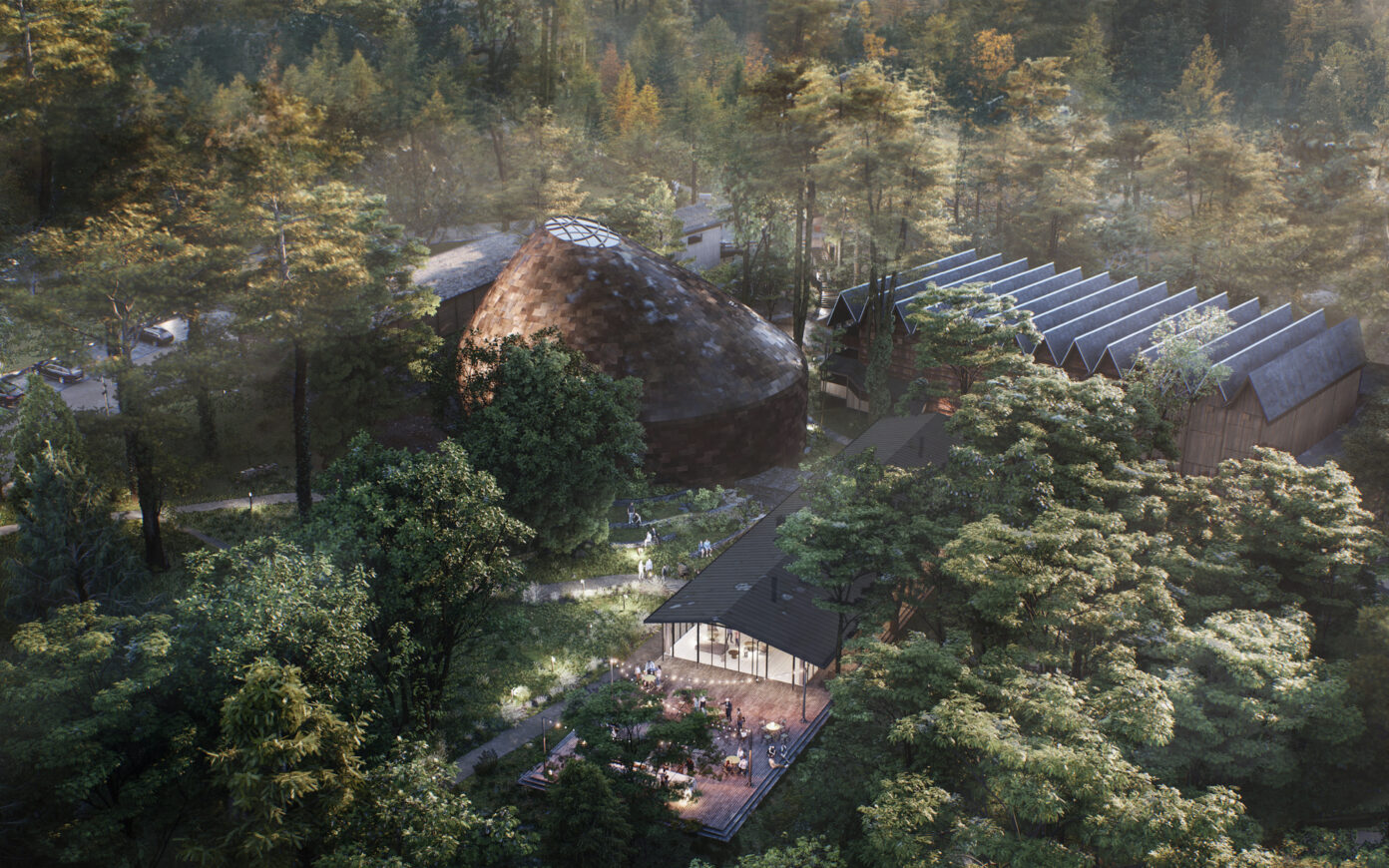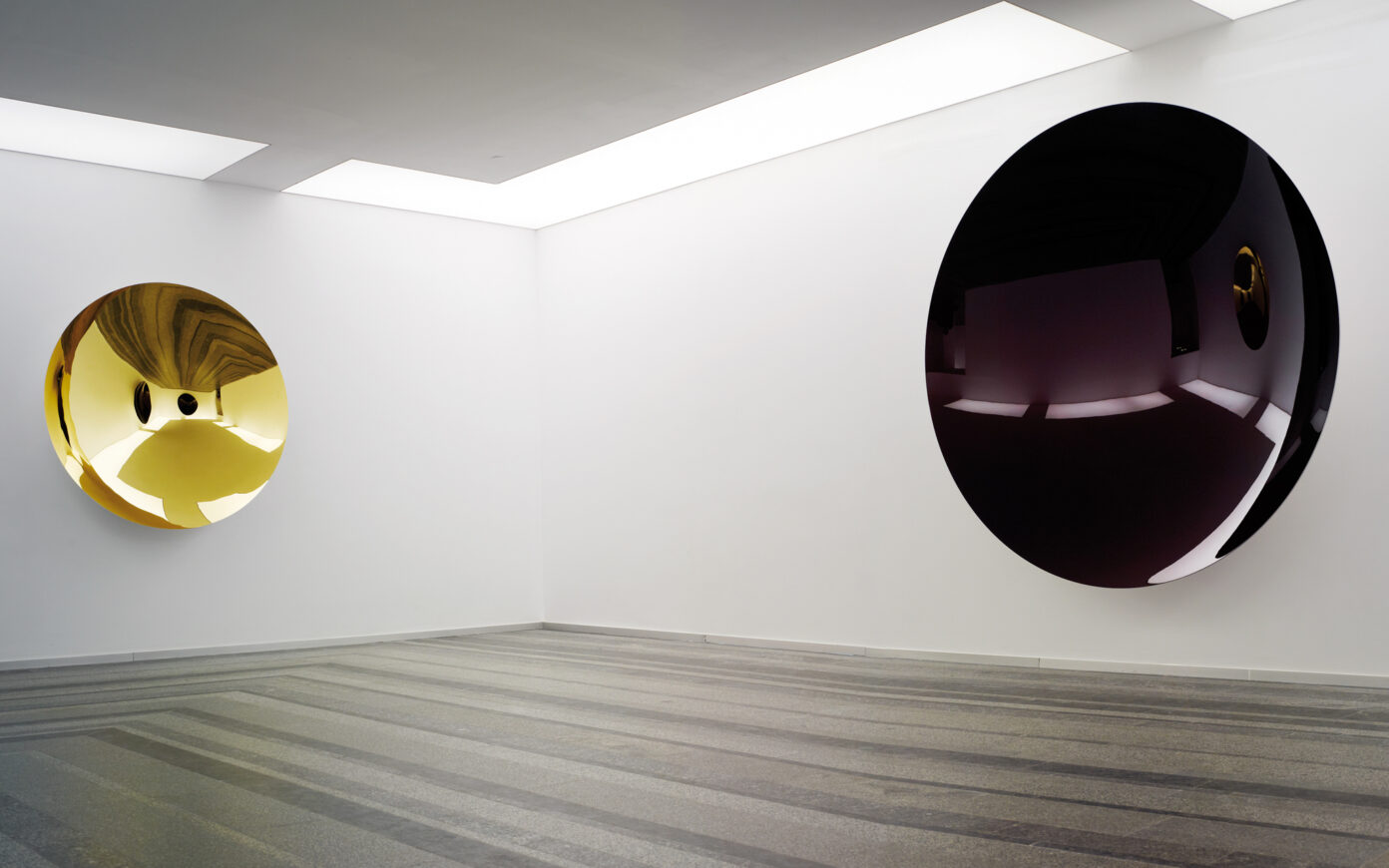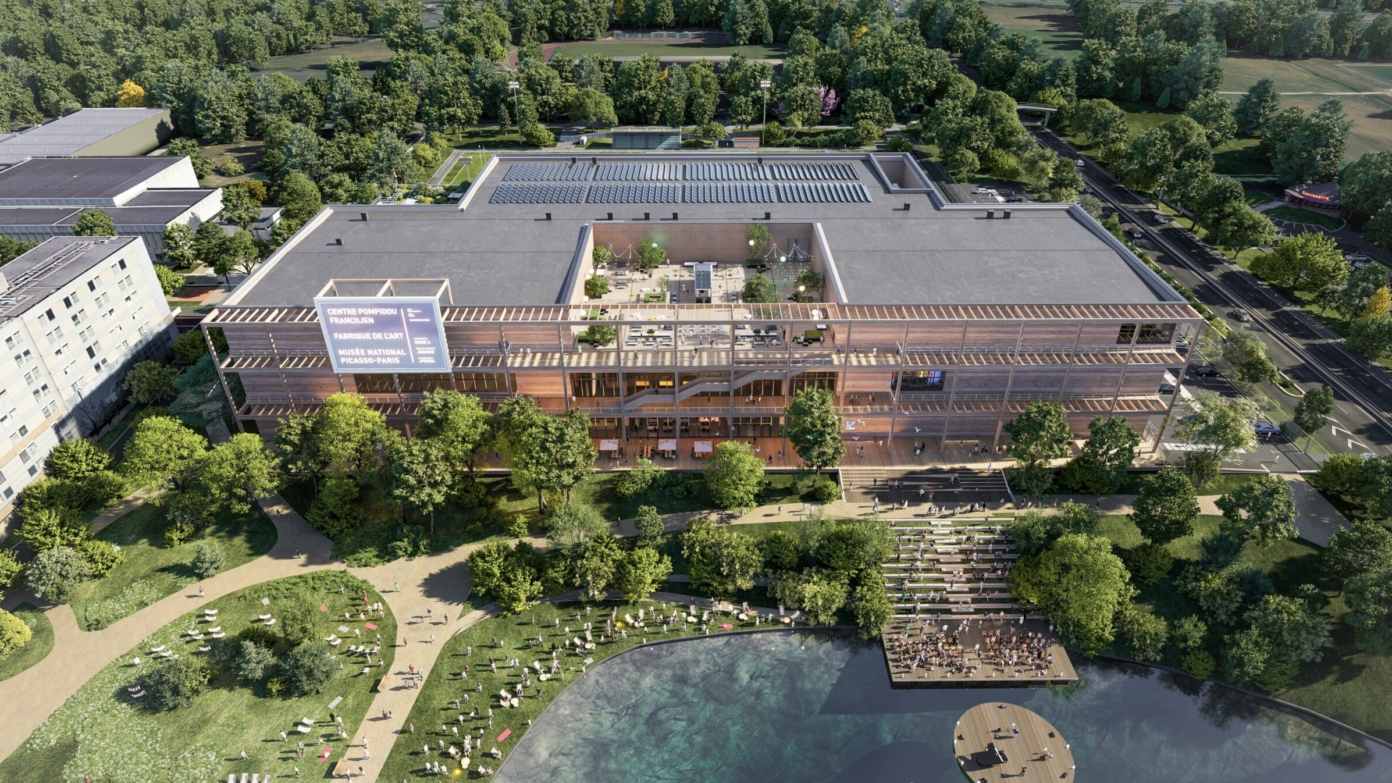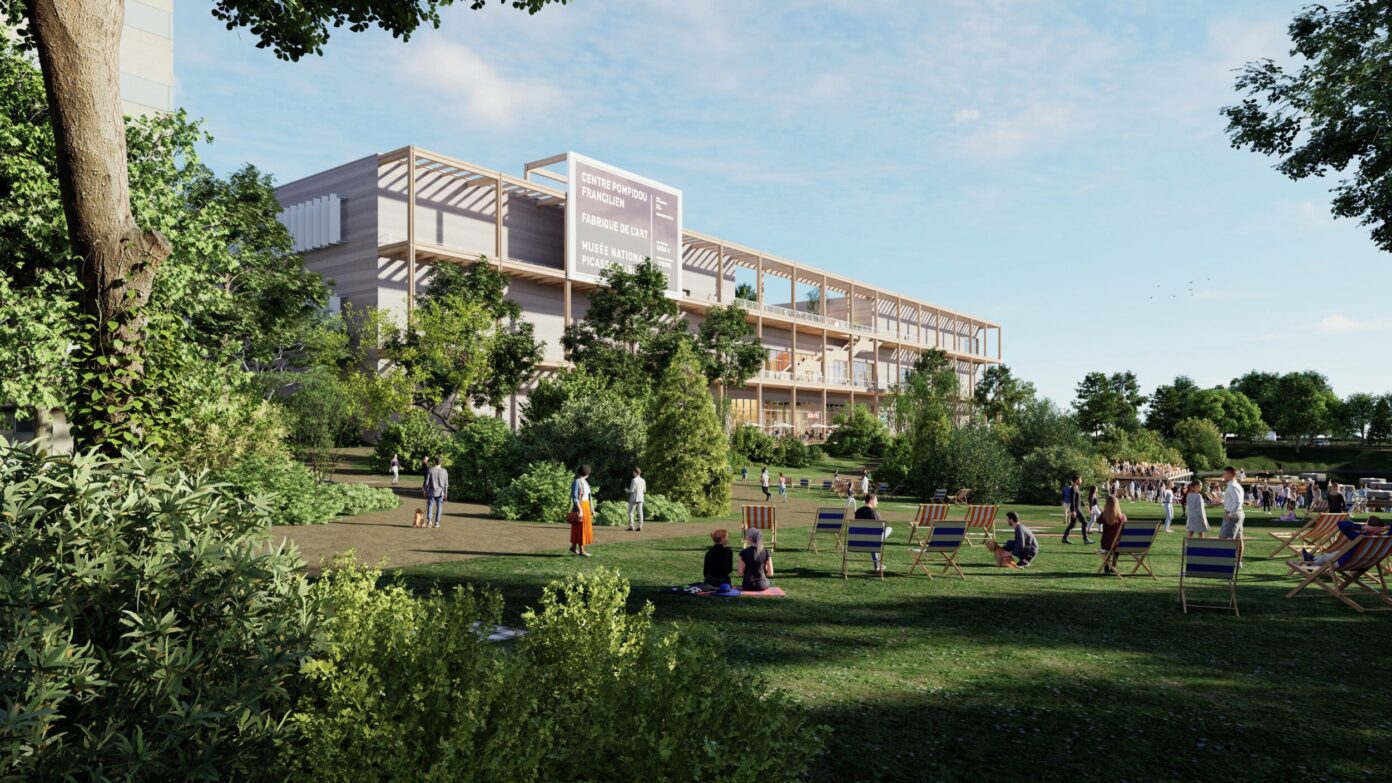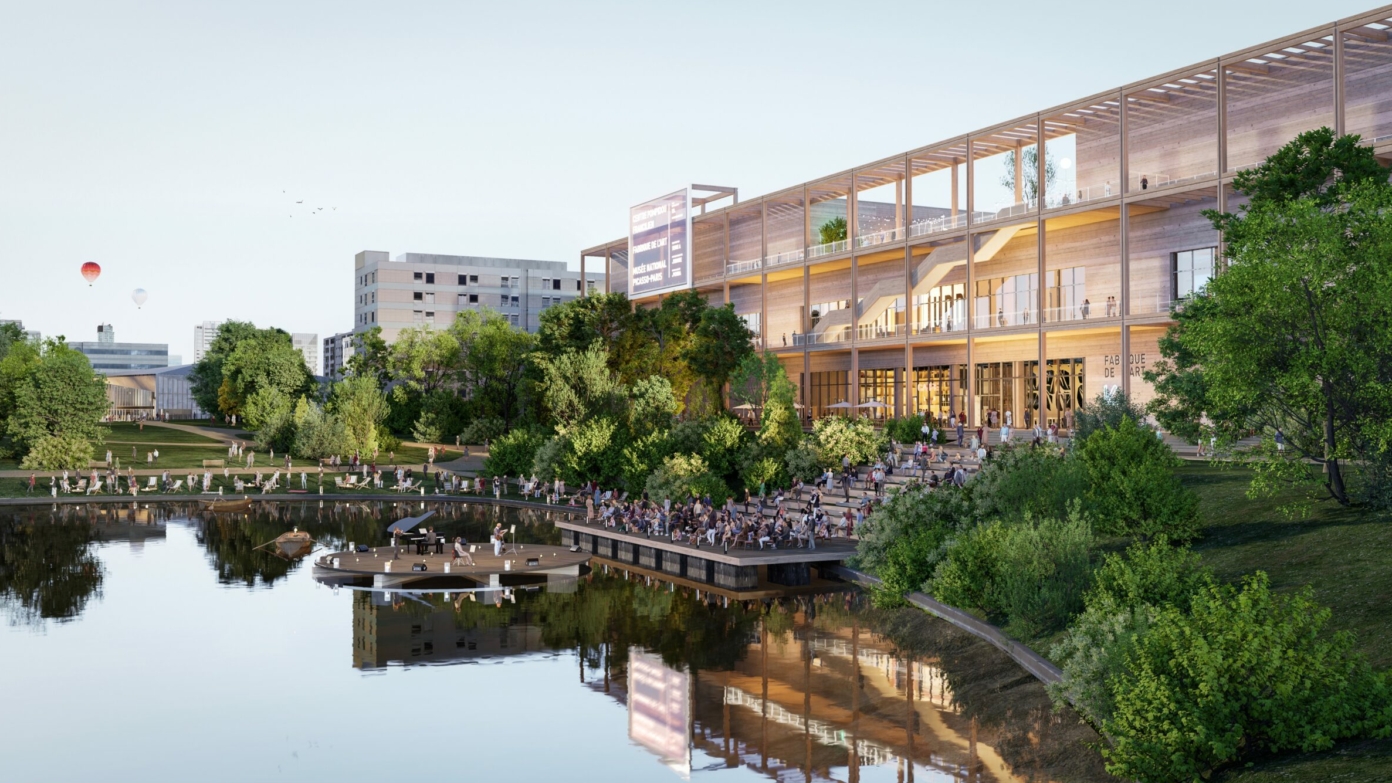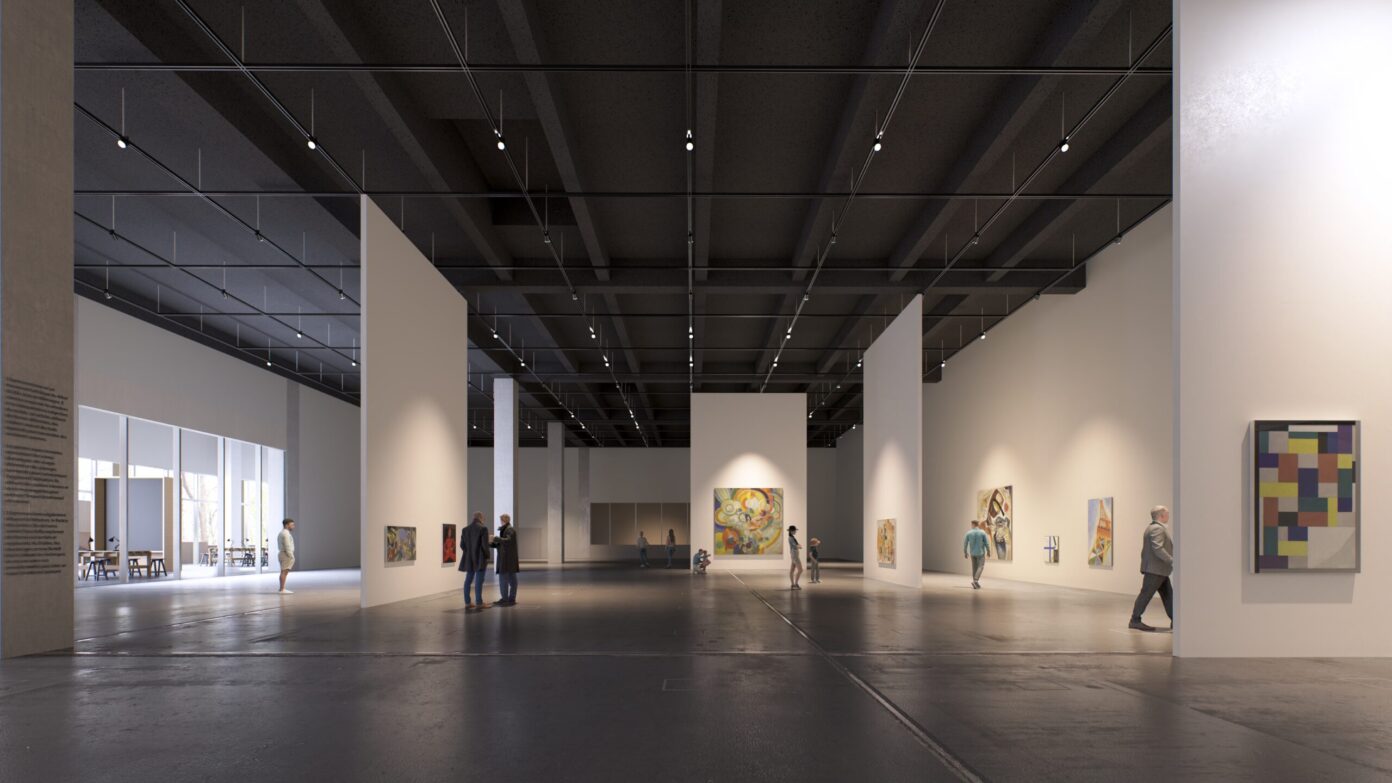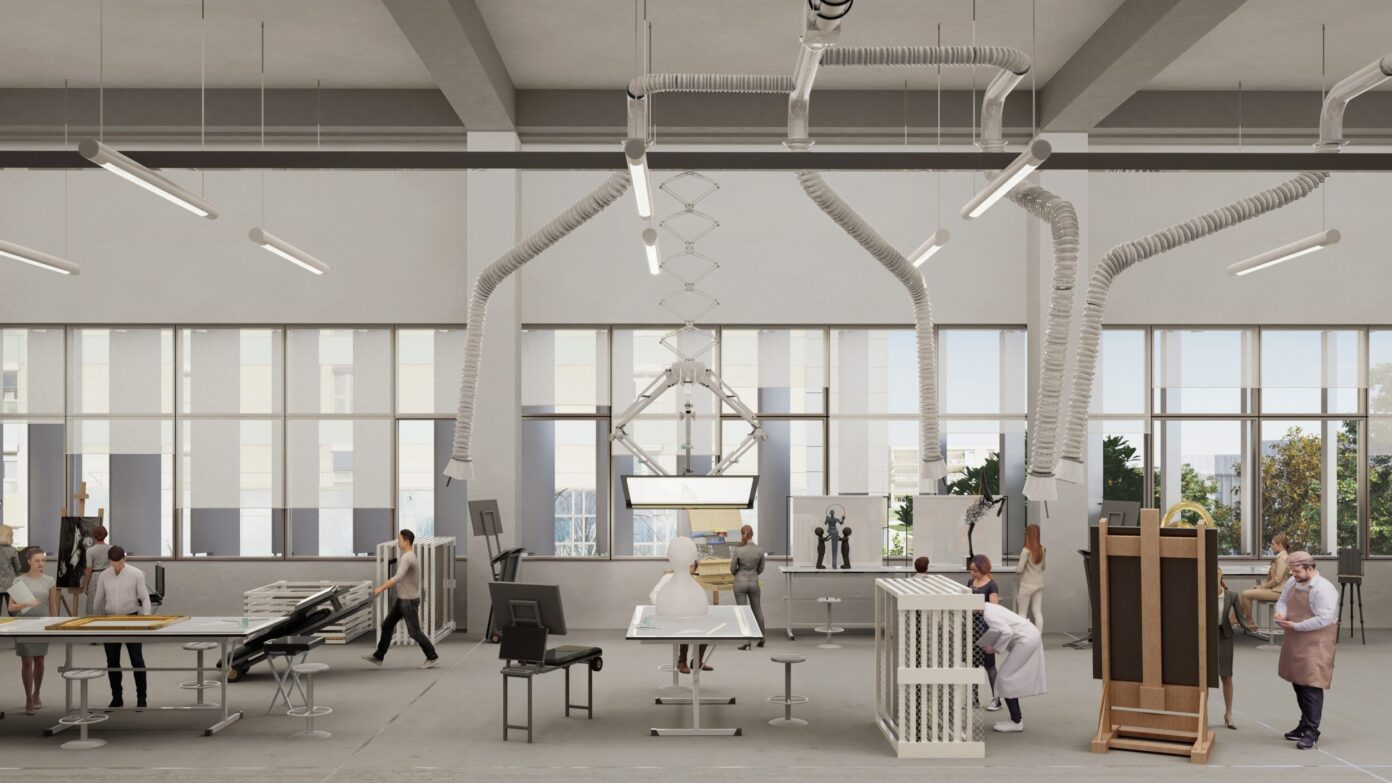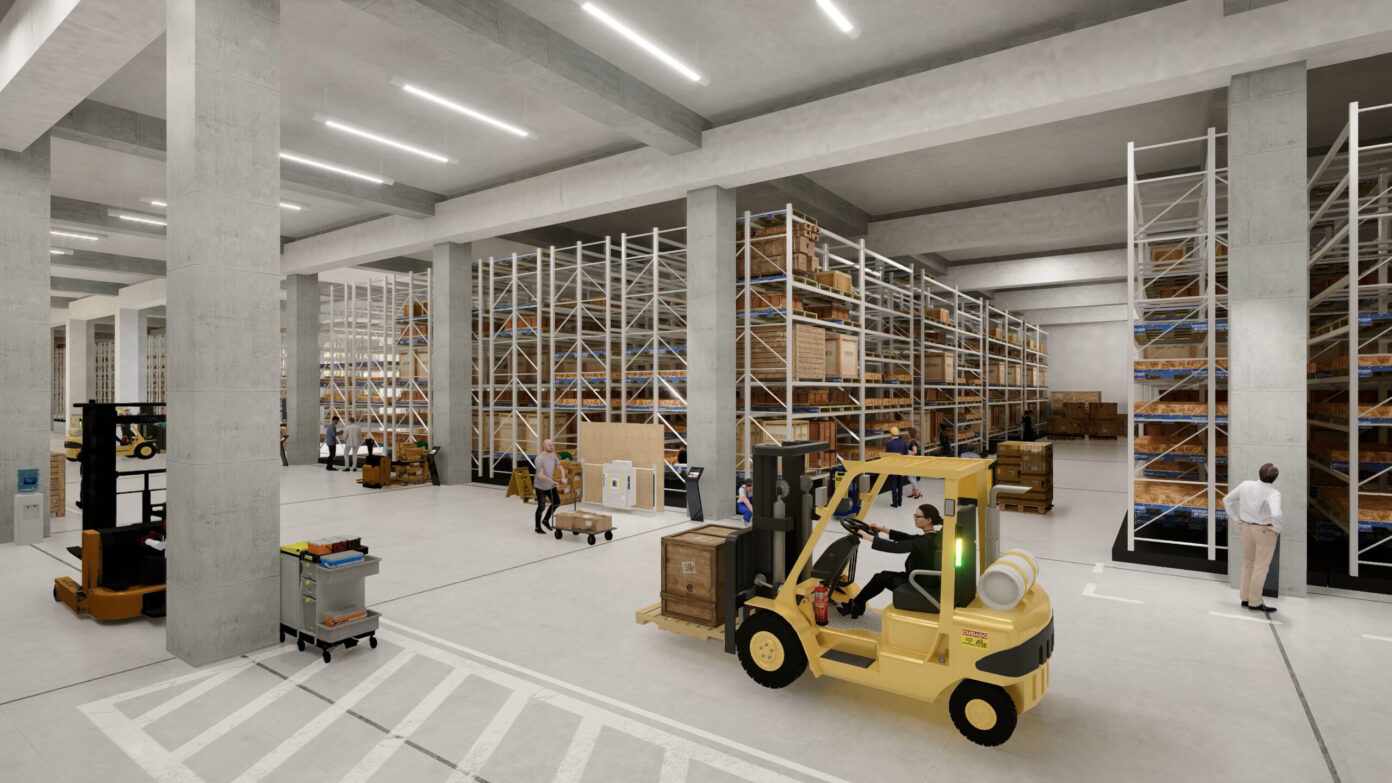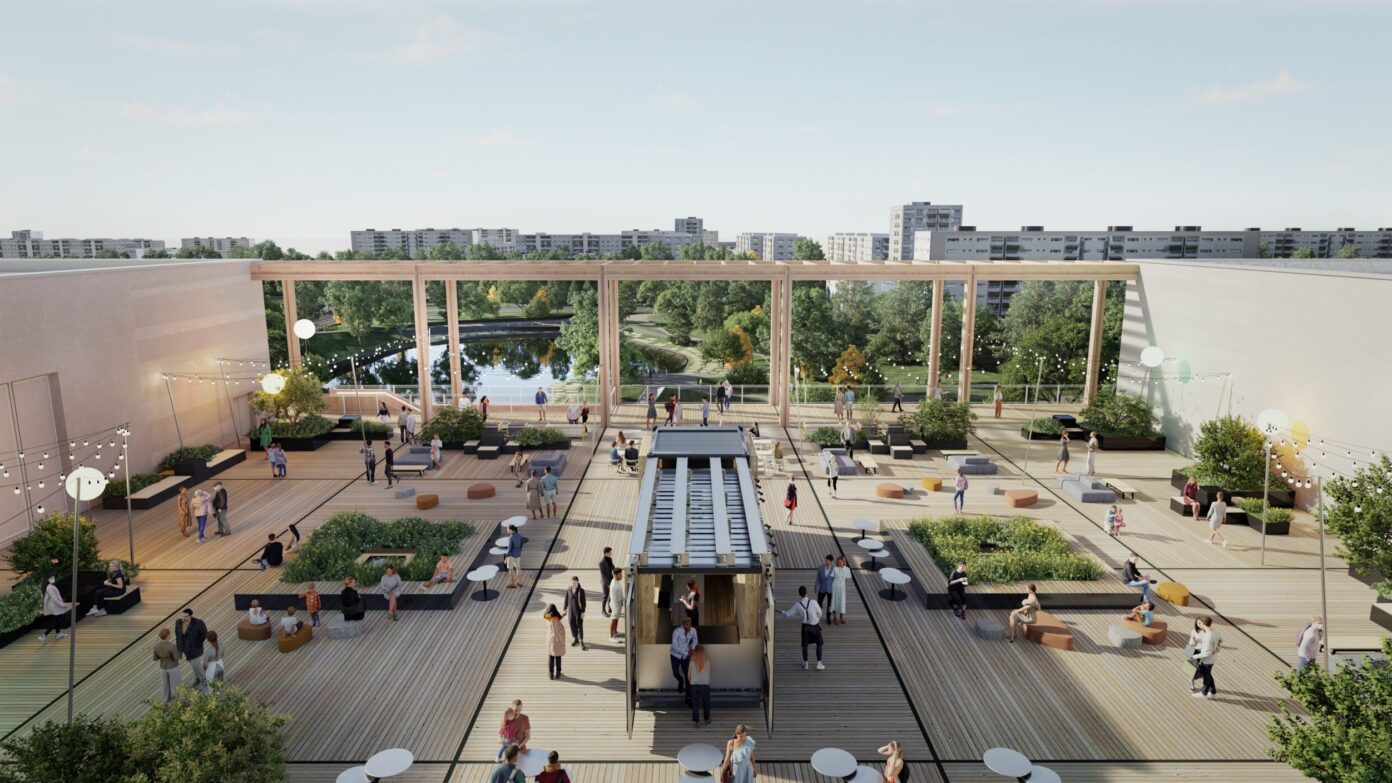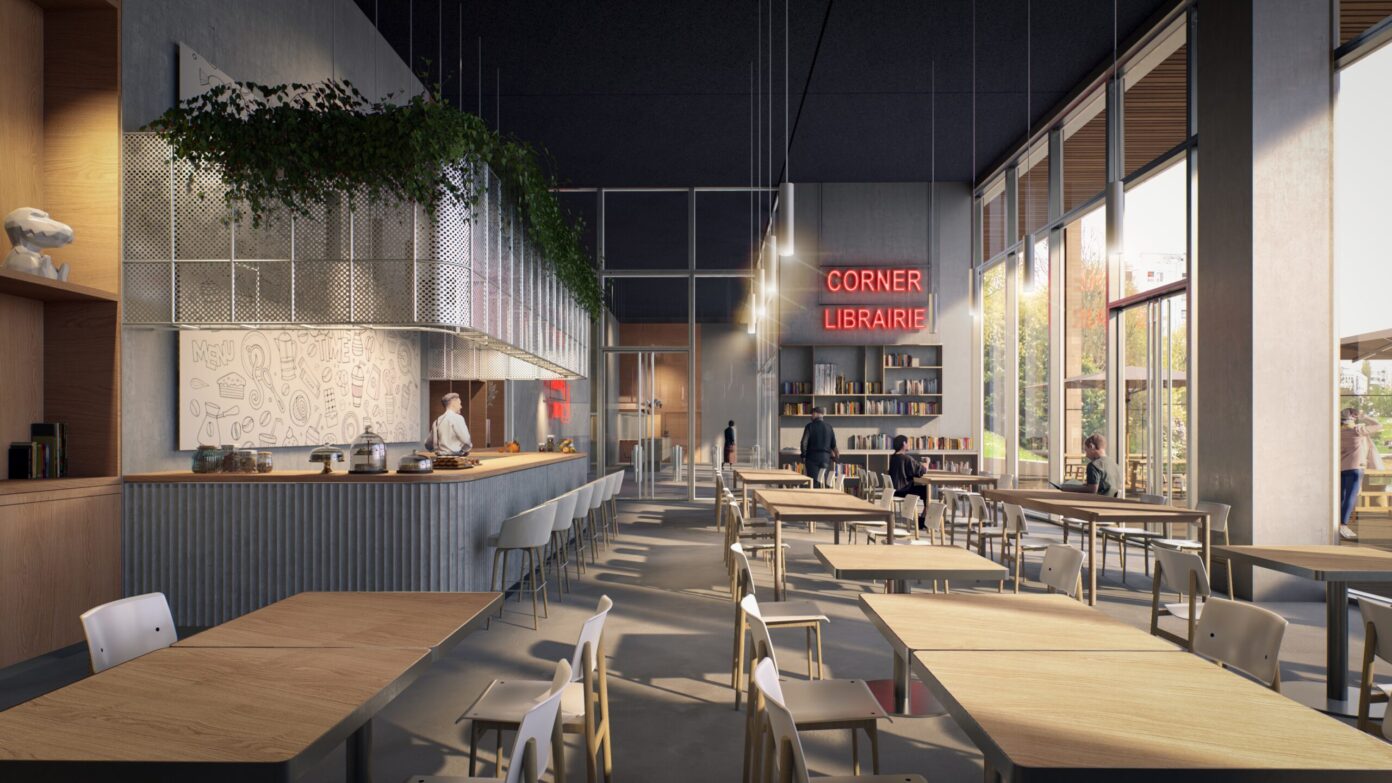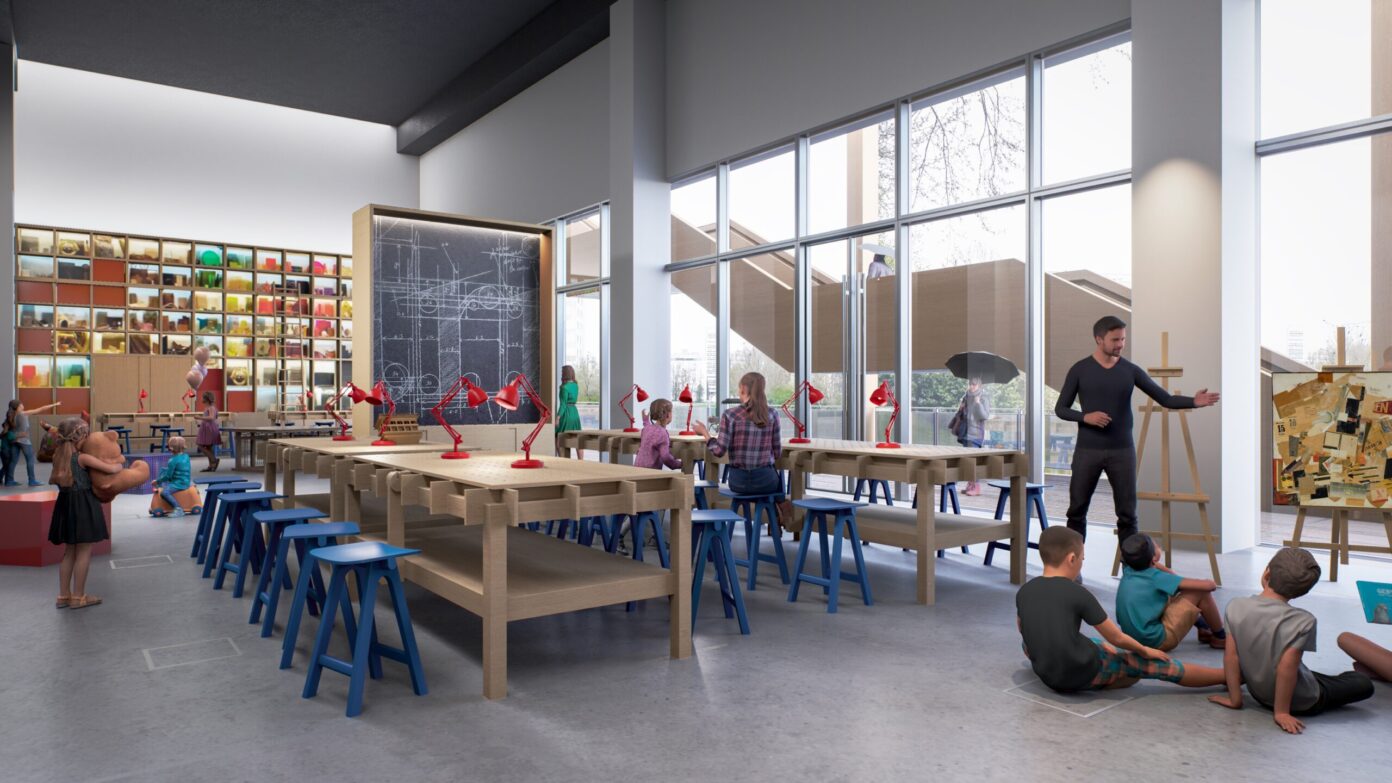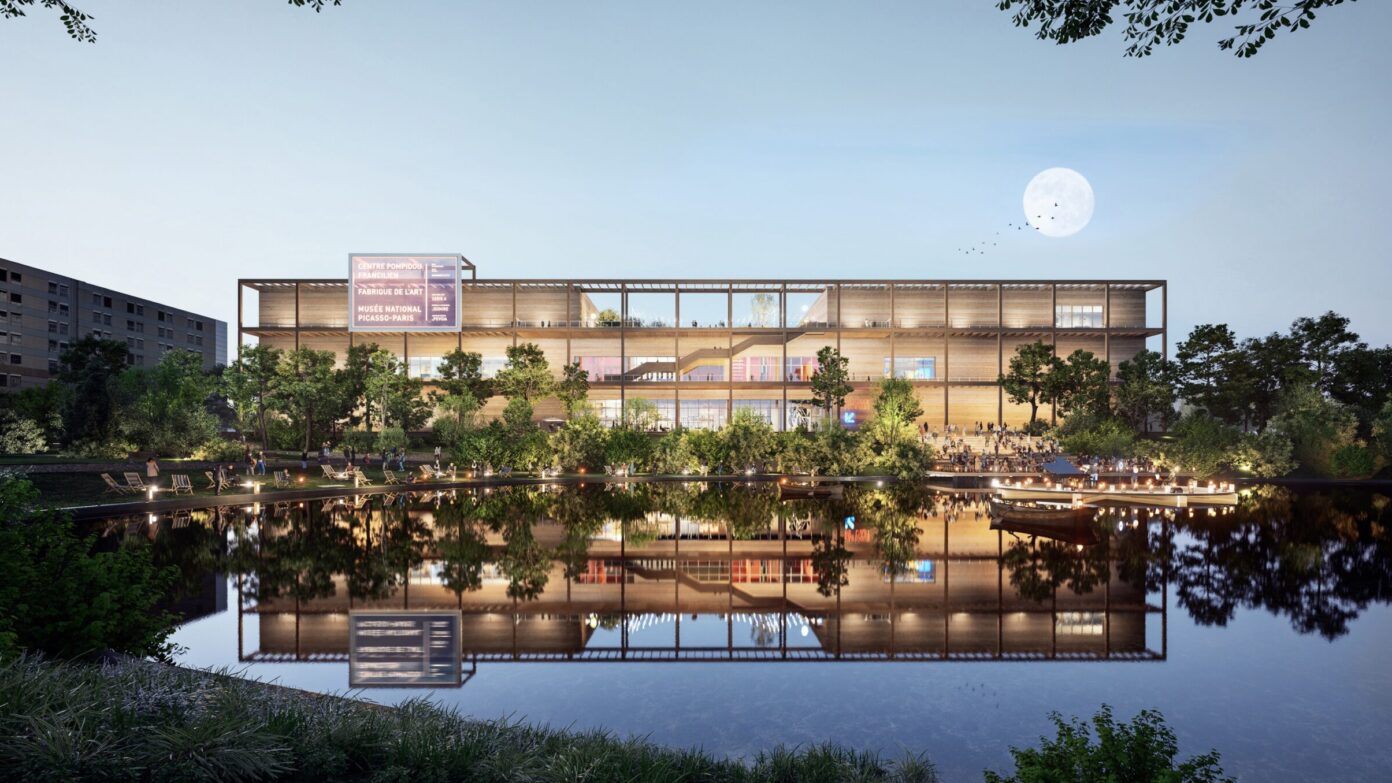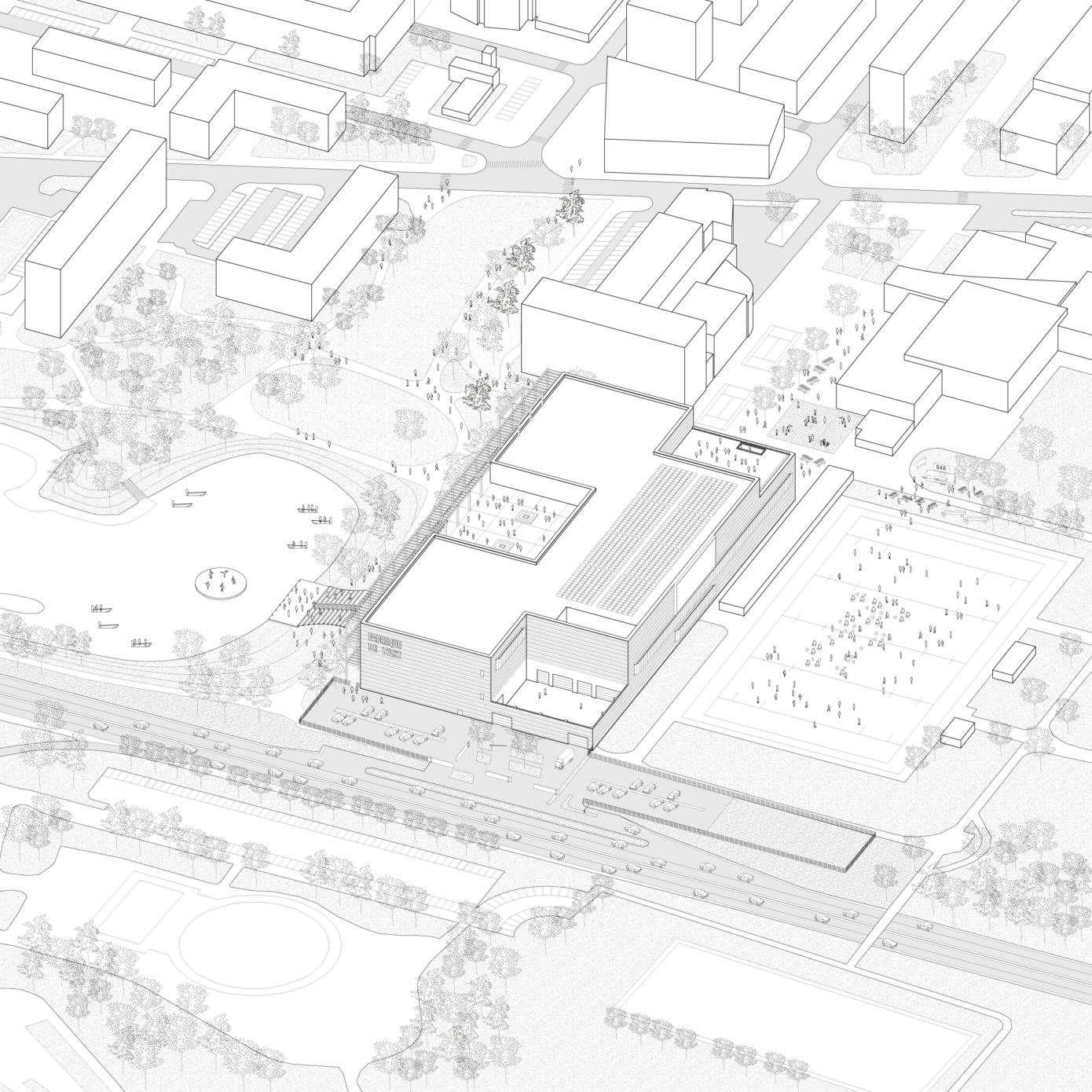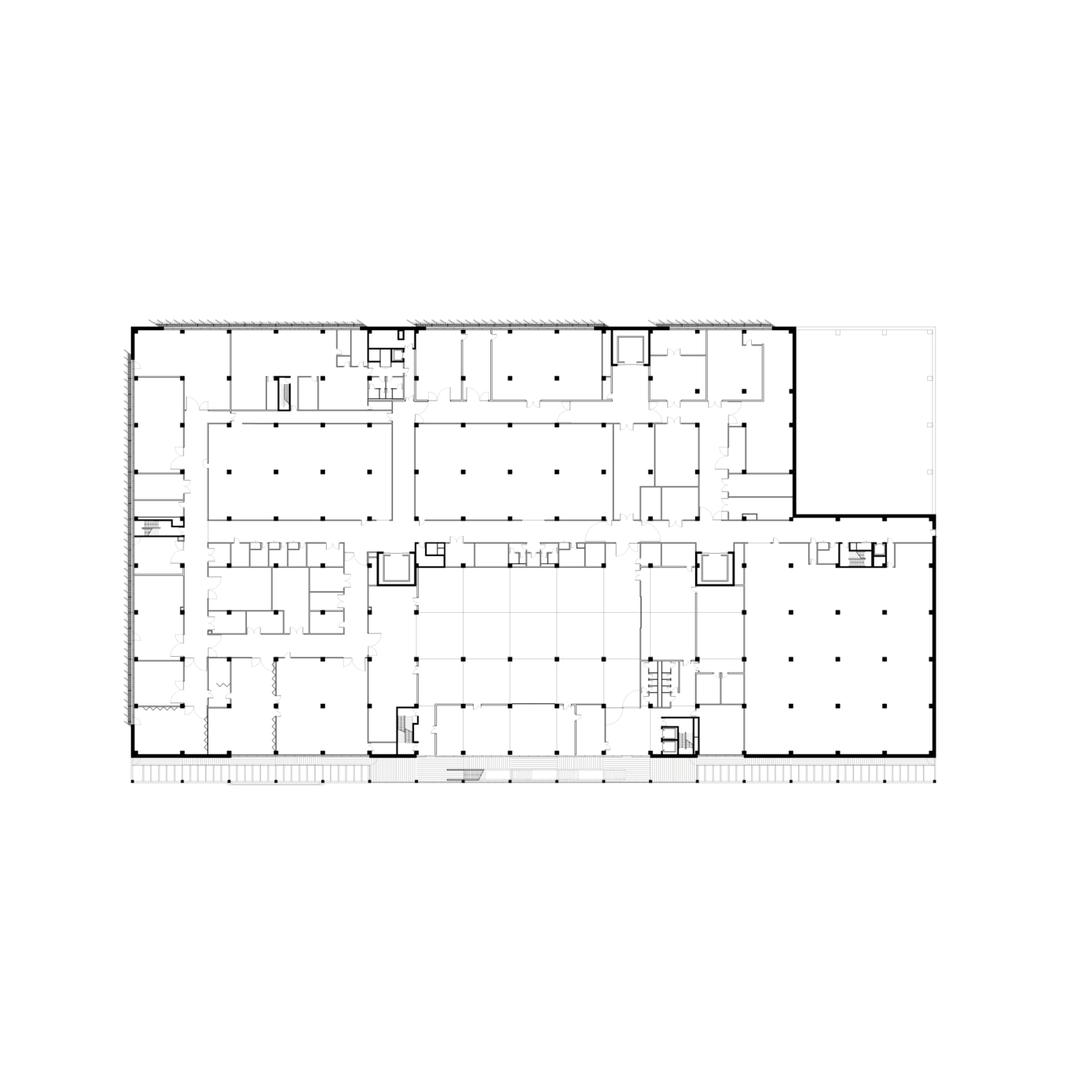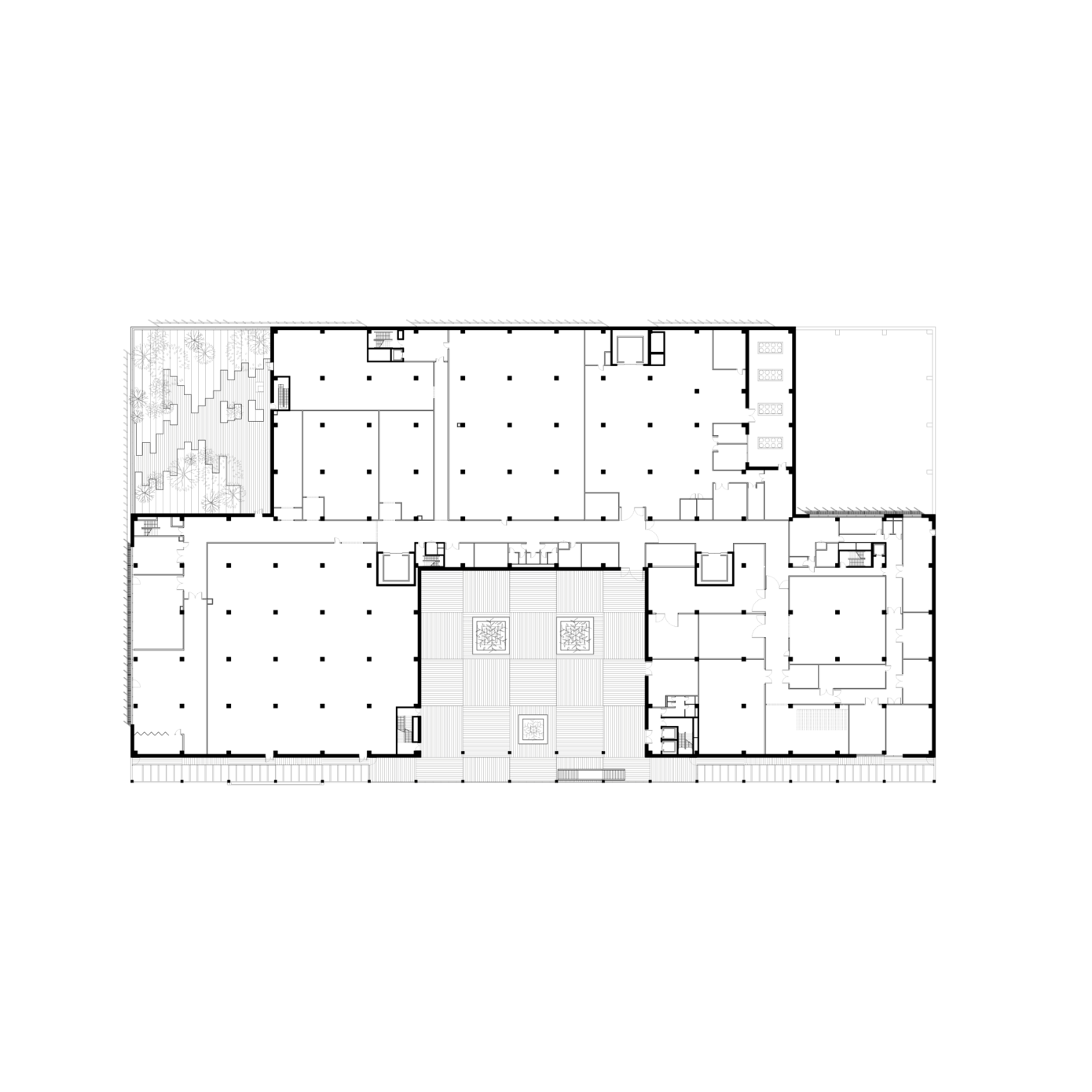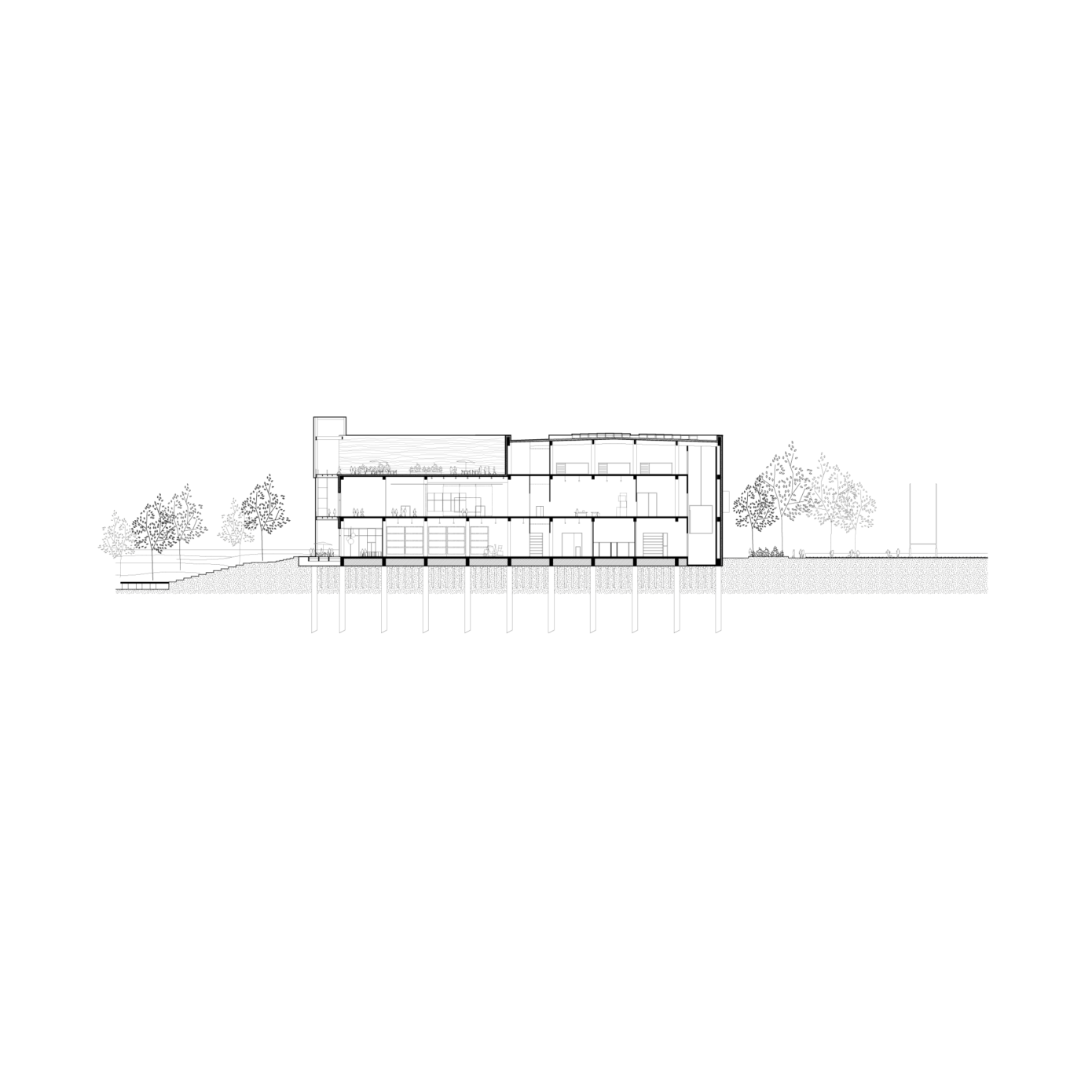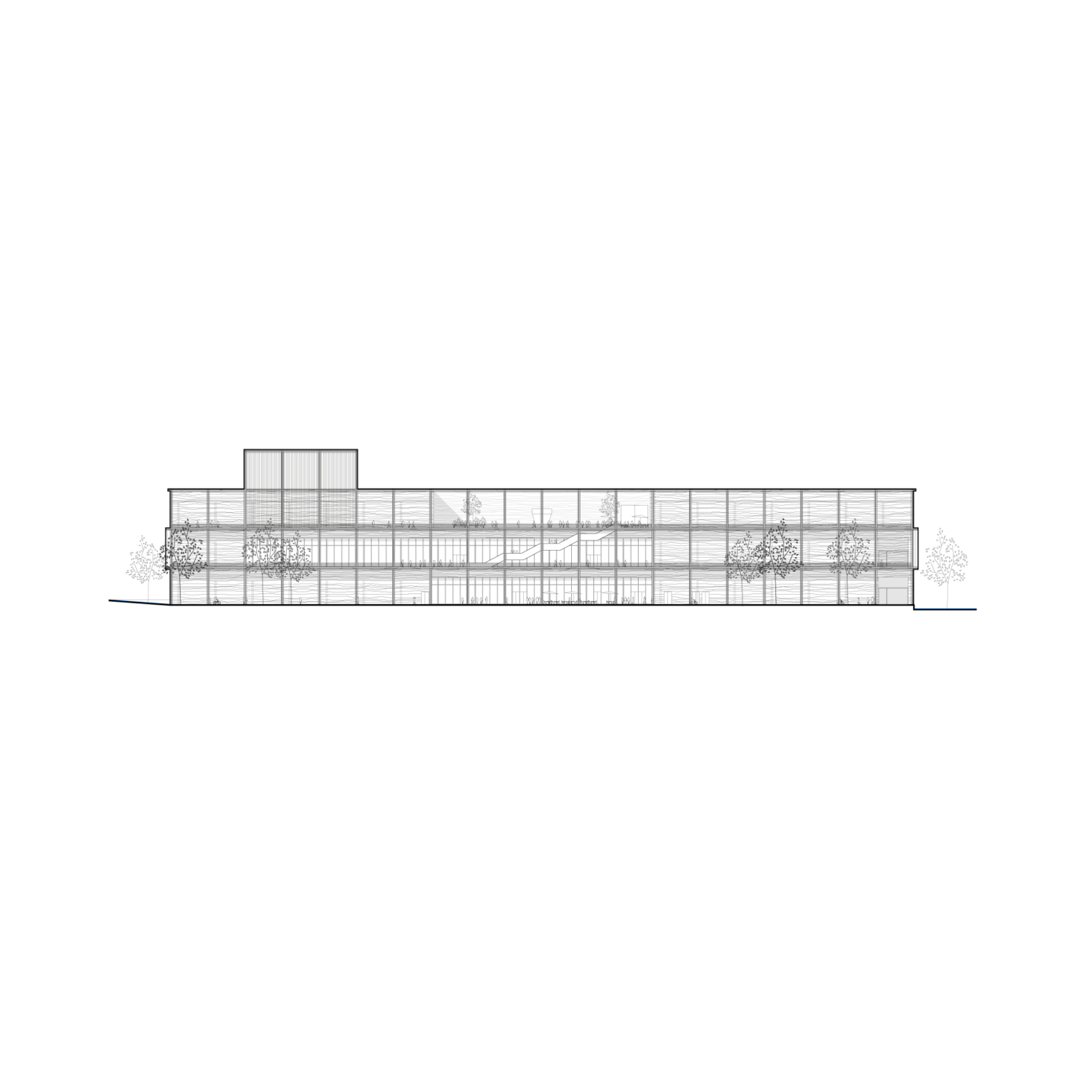La Source Vive is a new concert hall dedicated to chamber music located in Évian. The result of a collaboration between architects Patrick Bouchain and Philippe Chiambaretta. Its conch-like form is the outcome of sensory experimentation and scientific analysis aimed at achieving exceptional acoustics while blending seamlessly into its scenic surroundings. The project is housed by the Évian Resort and embodies Aline Foriel-Destezet’s commitment to promoting music. Born of her desire to support the creation of an architectural complex featuring a unique concert hall in service of a major music project, La Source Vive will be located at the Mélèzes site, in the close vicinity of La Grange au Lac, another iconic music venue designed thirty years ago by Patrick Bouchain. Together, they will form an exceptional architectural complex dedicated to music—two complementary facilities within the same institution working together to provide a complete, open, and supportive musical experience.
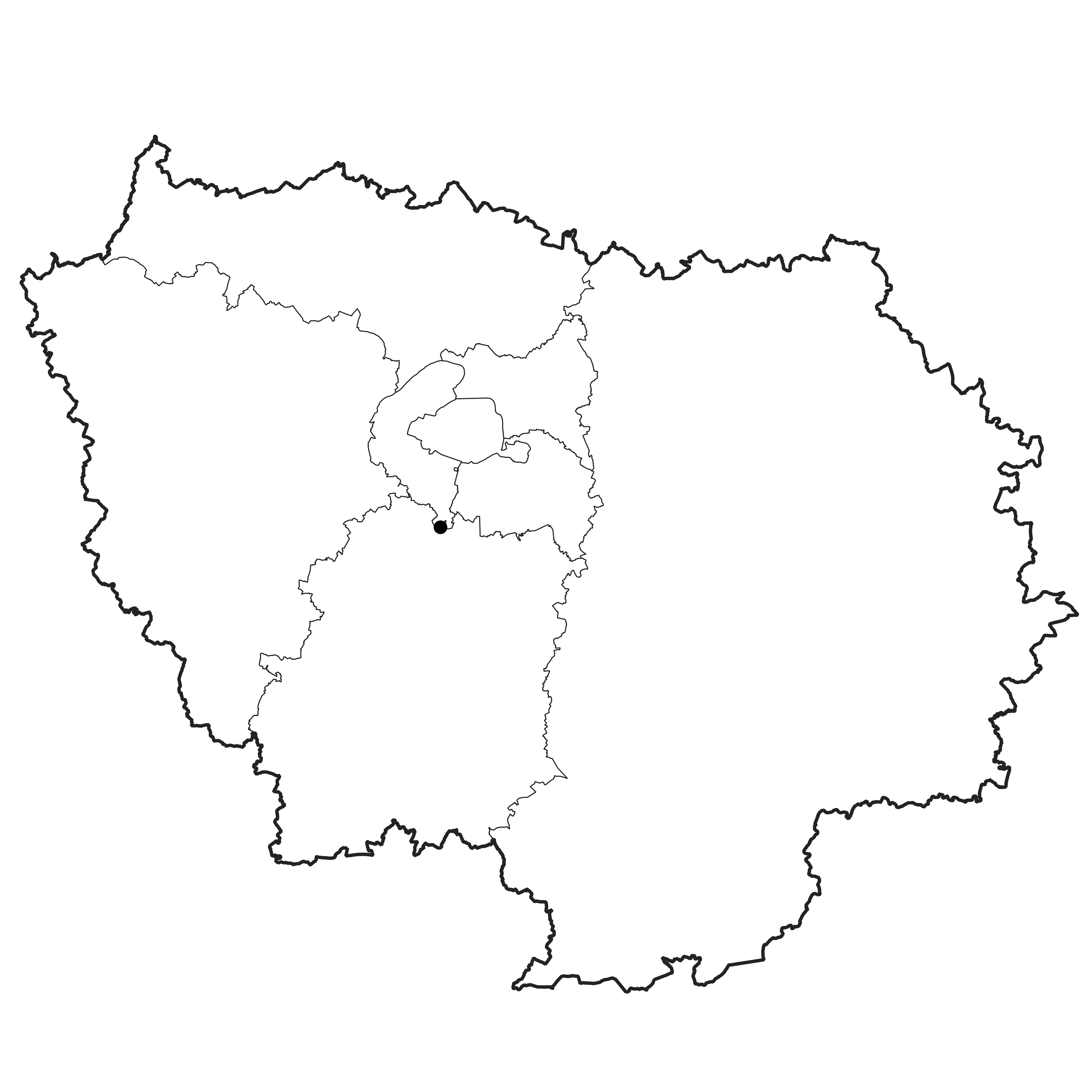
A Janus Building
The Centre Pompidou Francilien – Fabrique de l’Art / Musée national Picasso Paris, which will house the reserve collections of both institutions, is a building that has two faces, expressing the paradox of its program. On one side, the “vault” is a monolith that only allows controlled natural light into the workshops to ensure the best conditions for the conservation and restoration of two of the world’s largest collections of modern art. On the other side is a welcoming and open profile, which is designed to connect the public to artistic creation and aligns with the avant-garde philosophy of Piano and Rogers’s architectural project. This is achieved on the scale of the Île-de-France region, however, radiating from Massy, a cultural city near the Paris-Saclay cluster. The project combines the strengths and qualities of two institutions that share the common belief that the cultural venues of tomorrow should be open and accessible, and achieves this via cultural and educational programming centered around the collections and the work of professional conservation.
A Reinvented DNA
The building extends towards Parc de la Blanchette through a tree-lined promenade, similar to how the Centre Pompidou opens onto the city with its piazza. The shaded terrace of the bookstore-café extends into landscaped terraces towards the lake. The exhibition spaces feature a wooden walkway offering unobstructed views of the park grounds, just as the Beaubourg district can be appreciated from the walkways of the Centre Pompidou. On the third story, a belvedere overlooking the canopy hosts public events; its staircase on the façade references Pompidou’s iconic “caterpillar.” The proportions of the building contribute to these subtle harmonies echoing the historic Parisian building, especially when it is mirrored on the lake.
A Rational Utilitarian Building
Two years of work in dialogue with the museum teams have allowed us to design an optimized building that offers a world class conservation facility, compacted to the maximum degree so as to cut down on any unnecessary surface area and save on materials and expenditure. The secure conservation facility provides all the required storage for various capacities and types. The reserves are developed on three levels, with the one dedicated to the Picasso Museum that operates independently. The heaviest and bulkiest artworks occupy the ground floor, while the lighter ones are housed on the upper levels. The workshops are located on the second and third stories to the north of the building. The exhibition platform, which is equipped with a technical grid that can accommodate any kind of museography, overlooks the reserves and offers outstanding vistas while remaining connected to the performance space. A glazed partition screens the workshops from the public, allowing visitors to catch a glimpse of recent acquisitions held in a room that is occasionally open for tours.
The streamlined layout follows a very simple cross-shaped plan optimized for forward-only flows coming from the logistics courtyard. The low distance between the workshops and the reserves improves synergies between teams by bringing conservators, restorers, and administrative staff closer together. The entire facility works towards ensuring the very best material work environment and comfort level, with indirect daylight entering the workshops, generous vistas, and a vast green terrace.
Ambitious Sustainability Goals
The audacity of the historic Centre Pompidou is reinvented through the lens of an awareness of the fragility of natural and human ecosystems. Its responsible approach to design involves resource optimization and the integration of sustainable and bio-sourced materials, including the use of wood for the exoskeleton and part of the building’s structure and flooring. Opting for a compact building helps lower the amount of materials used as well as energy required, which is offset by almost 2,000 m² of rooftop photovoltaic panels. The nine meter-square cubic grid, which is consistent across all three levels, allows for superior levels of flexibility, modularity, and adaptability of spaces over time, thus ensuring the building is environmentally sustainable.
Dialogue between Nature and Culture
With its understated geometry, the façade is composed of a dual-layer wall made of geological concrete and is almost 50 cm thick, which provides substantial thermal mass. Its materiality reveals sedimentary layers symbolizing the importance of soil in ecosystem conservation. The vertical slats of the workshop windows, which come to life with kinetic movements at night, contribute to enhanced passive solar control based on the cardinal directions, while maintaining exterior views. The project follows the north-south orientation of the plot, creating an ecological corridor with Parc de la Blanchette, its lake, and the Massy-Opéra district. This layout preserves the wooded fringe of the plot, while portions of the roofs and façade are vegetated, along with the tiered steps leading down to the lake, which can accommodate open-air artistic gatherings. This dialogue between the building and the park signifies a new alliance between nature and culture.
-
Program
Conservation and creation centre
-
Location
91300 Massy
-
Surface
28,600 m² of floor area, including 23,600 m² dedicated to the Centre Pompidou (2,600 m² of workshops, 13,000 m² of storerooms); 2,000 m² dedicated to the Musée National Picasso Paris (250 m² of workshops, 850 m² of storerooms)
-
Status
Work in progress
-
Team
— Architect: PCA-STREAM
— Property development: ADIM
— BET Structure: Vinci Construction
— Economist: VPEAS
— Acoustic design: Studio FA
— Facade design: EOC Engineers
— Fluids design: WSP
— Scenography: Studio Adrien Gardère
— Landscaping: Bureau Bas Smets
— Eco-design BET: Etamine
— Safety and security consultant: Cronos Conseil
— BET SSI: Studio Farenheit
— Control office: Bureau Veritas
— Art logistics: Aïnu
— Road logistics consultant: ACC-S
— Timber structure: Bollinger & Grohmann
— Maintenance contractor: Vinci Facilities
